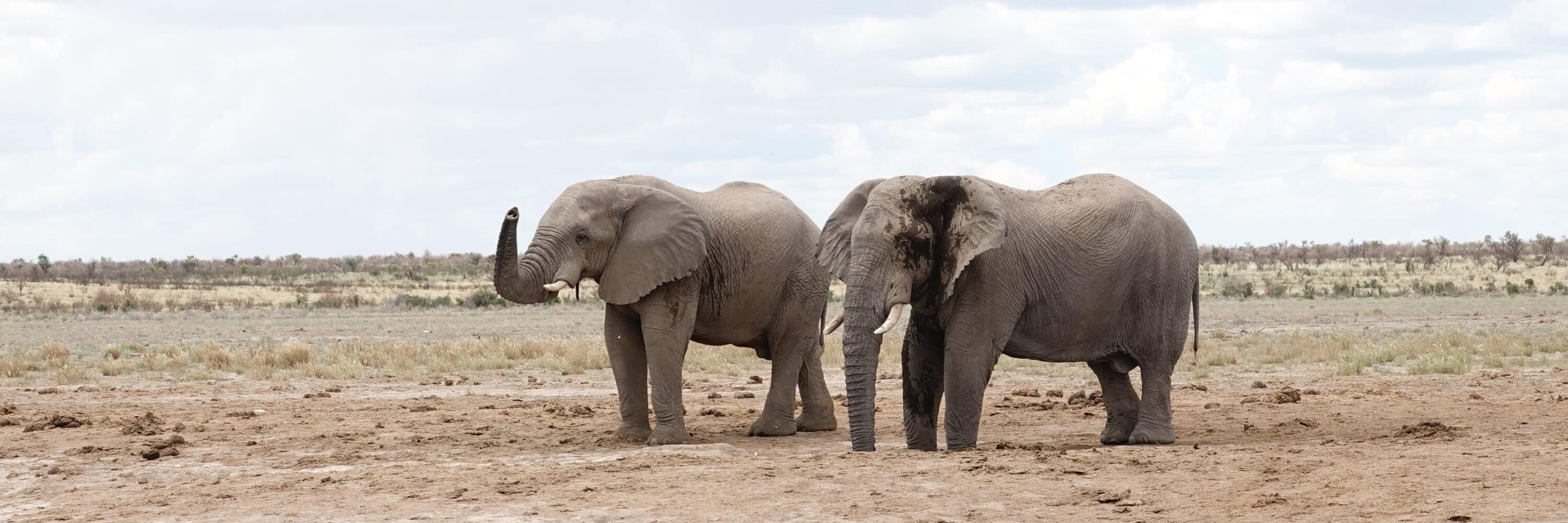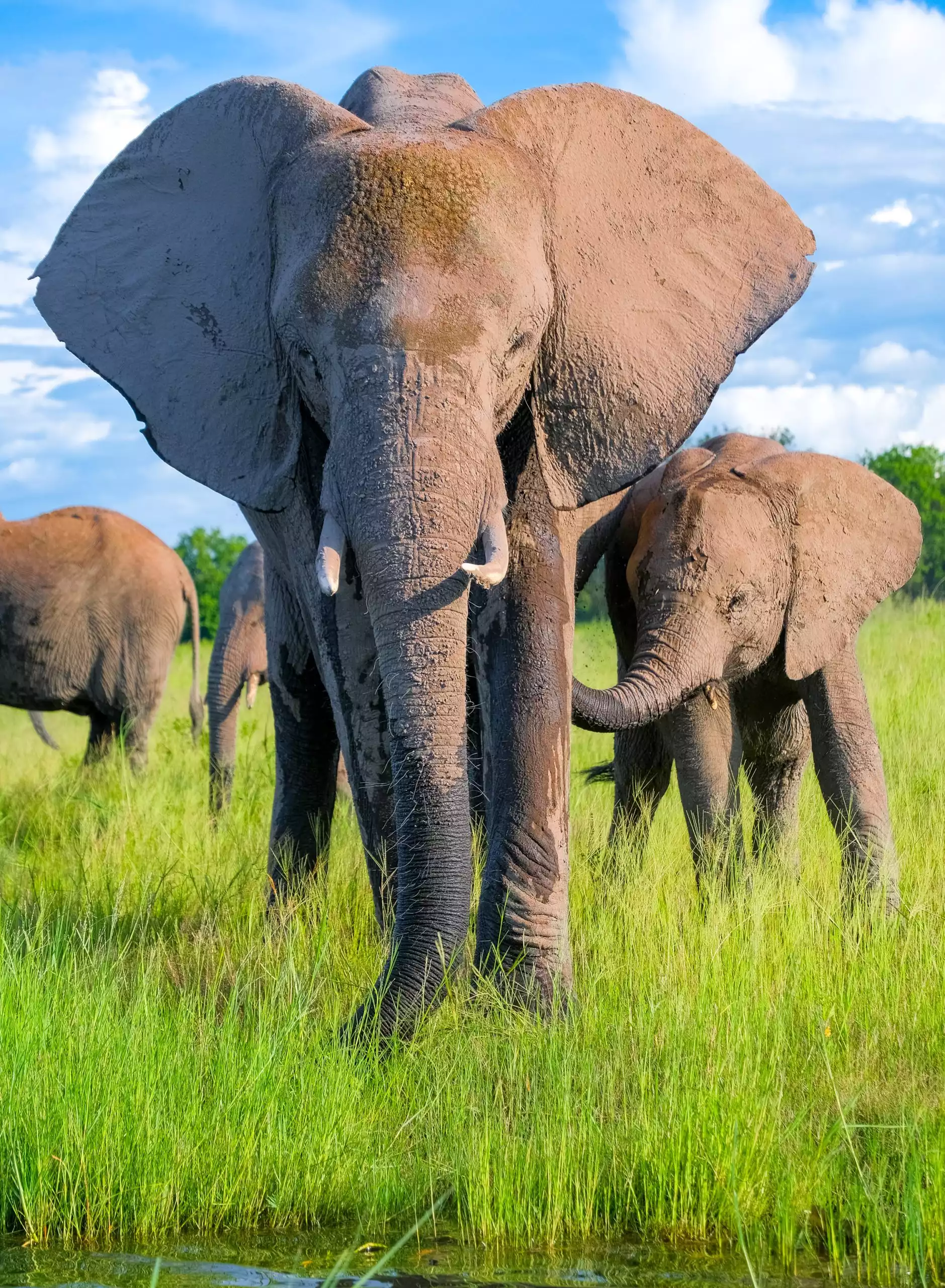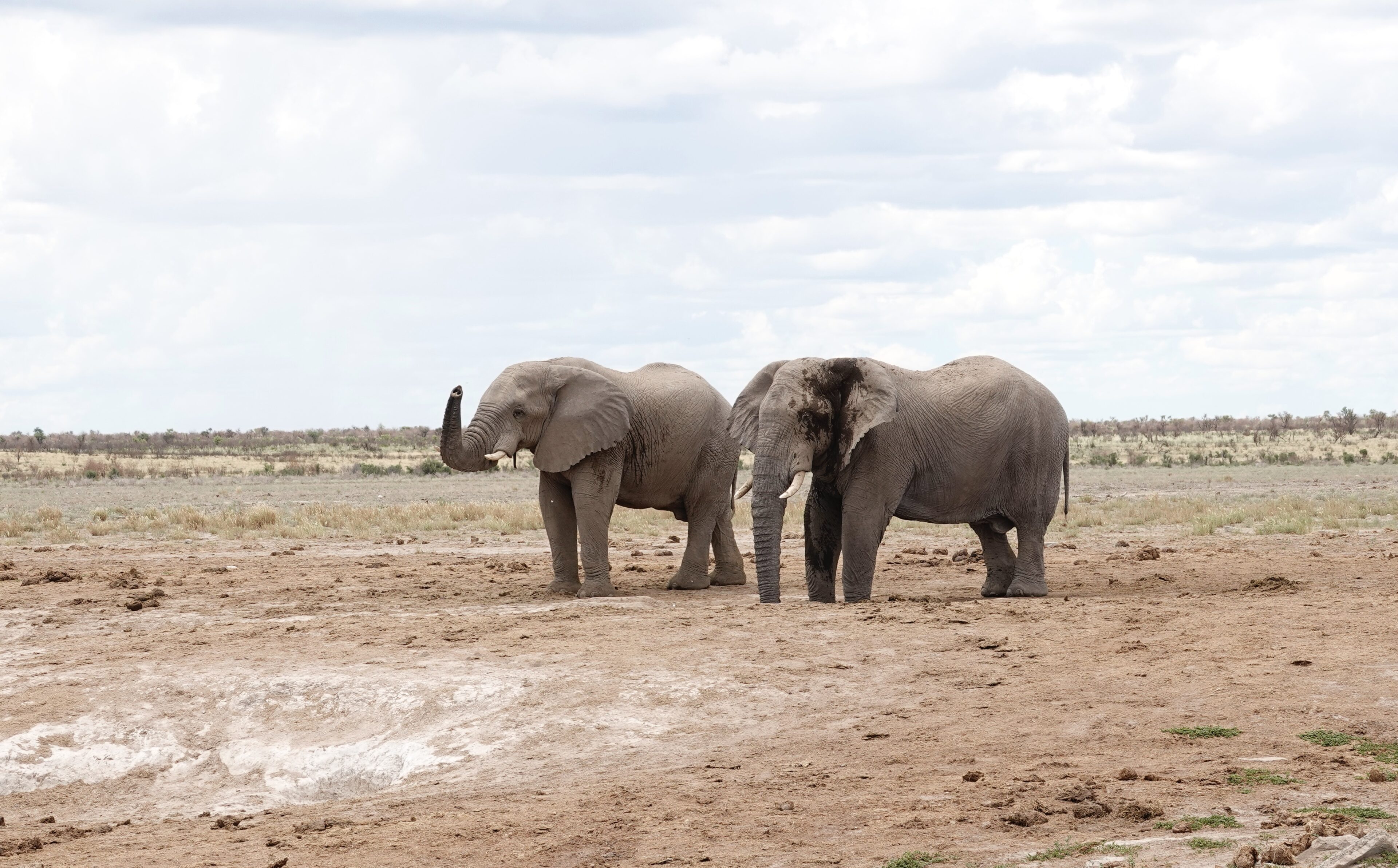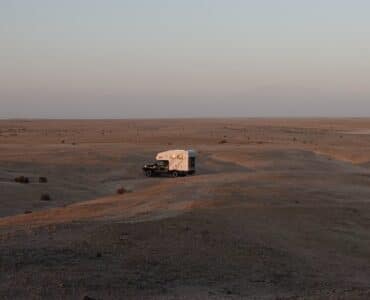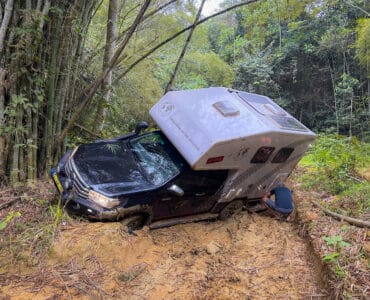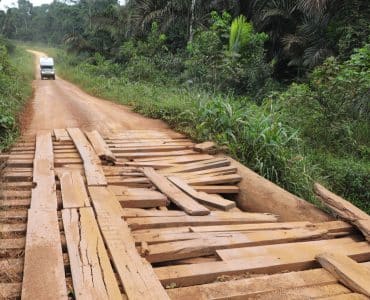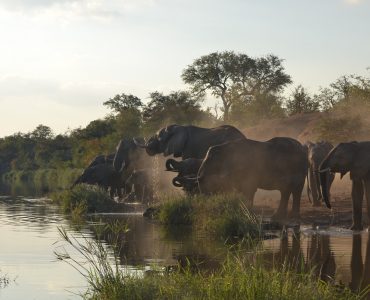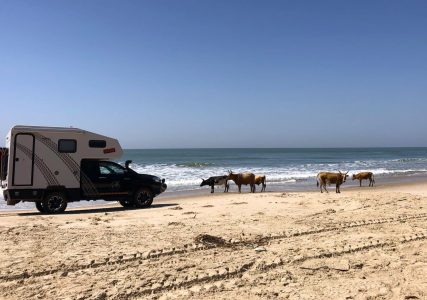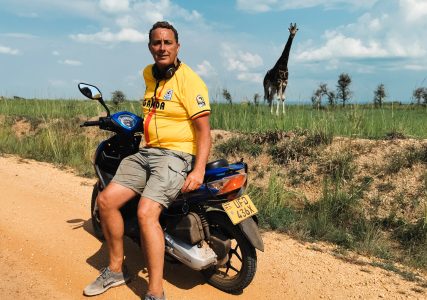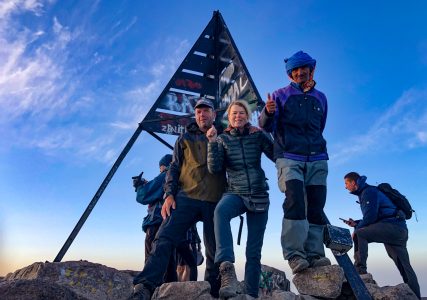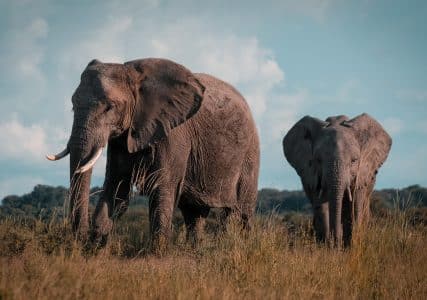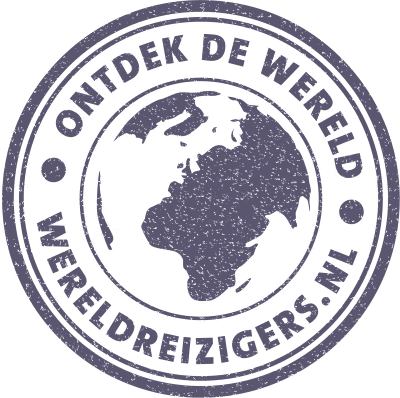We continue our overland tour Africa in Botswana. We (Cor and Grietje from NoFear Travel), travel with our Toyota Hilux 4×4 camper. The African continent is the Mecca for 'overlanding' with many challenging routes and beautiful destinations. The first African country we visited during our trip to South Africa is Morocco, followed by Mauritania, Senegal, Mali, Guinea, Sierra Leone, Liberia, Ivory Coast en Ghana. After a stopover in the Netherlands, we continue our overland journey through Africa. We drove on Togo, Benin, Nigeria, Cameroon, Gabon, Congo-Brazzaville, Angola en Zambia.
We have now arrived in the neighboring country of Zambia. In this article you can read about our experience overlanding in Botswana. As you are used to from us, you now start watching the video again.
About Botswana
Overlanding in Botswana. After Zambia, it is our second African country without maritime borders on our overland journey. Botswana is big in diamonds, but gold, sulfur and coal also contribute to the economy. Tourism also makes a significant contribution to the country with only 2 million inhabitants. Botswana is approximately 14 times the size of the Netherlands.
So are the Okavanga delta, Chobe National Park and the Kalahari Desert are fantastic natural wonders and attract many visitors.
Also read: Chobe National Park | Tips for the elephant paradise in Botswana
Fortunately, no wars have occurred in recent history in the stable democratic country. Until 1966, the country was a prectorate (light form of colony) of Great Britain and was previously called Bechuanaland (Beetsjoeanaland in Dutch). We enter the country via the only 157! meter border with Zambia in the north.
Overlanding in Botswana
1. Zambia – Botswana border crossing
The mighty Zambezi River forms the border between Botswana and Namibia and therefore a small part of Zambia.
A modern bridge connects the countries.
Across the street there is a huge modern building where the formalities of both countries can be done. Nice and easy and fast!
In addition to the well-known stamps in passports and Carnet of passage, we pay road tax and car insurance for reasonable amounts.
Then the last barrier opens and we find ourselves in the 20th African country on this tour. Exciting again!
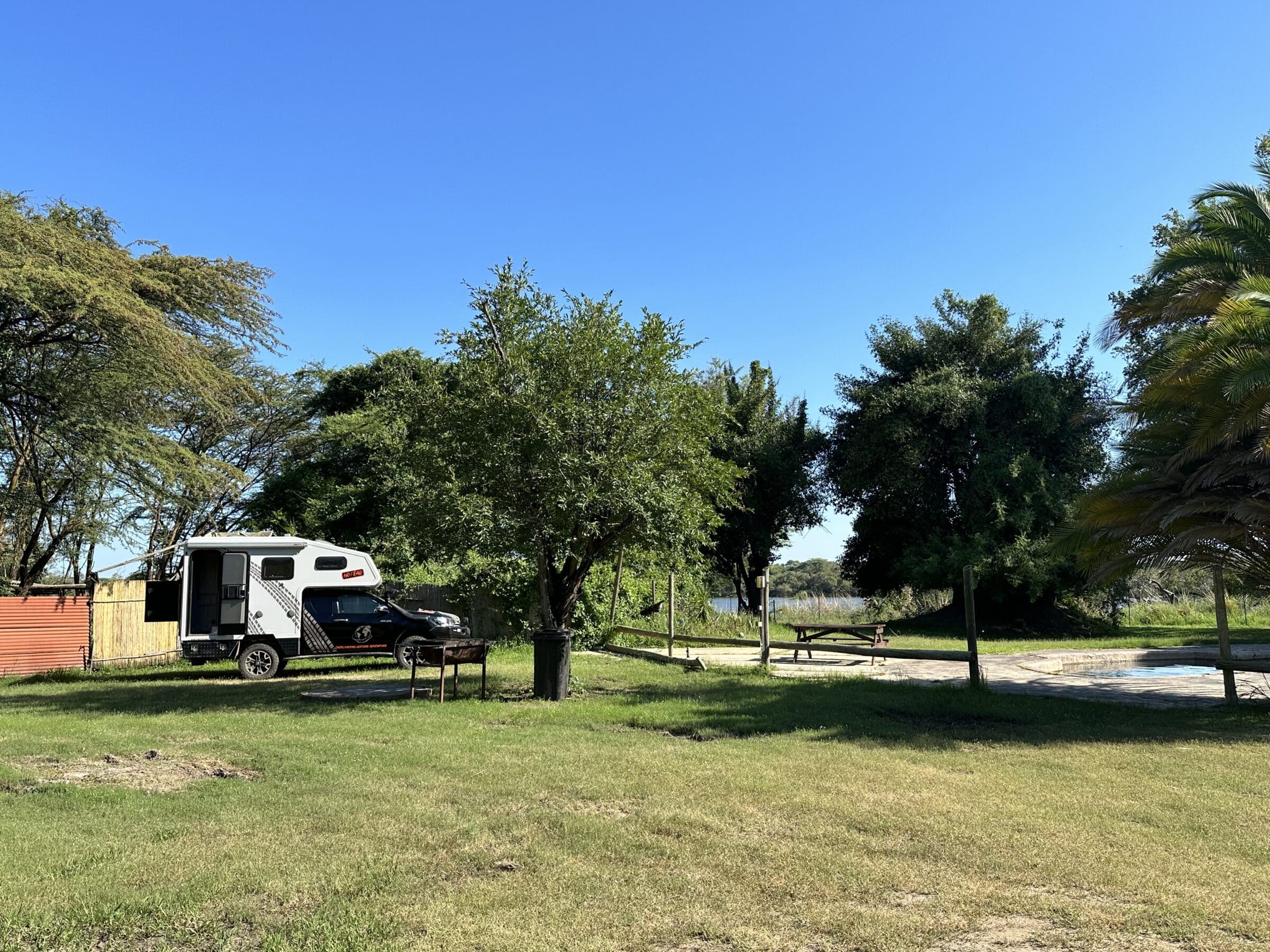
2. Kasane
Located almost directly across the border kasane, a village that originally did not have much to offer. But the enormous popularity of the adjacent Chobe National Park has turned the village into a vibrant tourist attraction.
Many -often quite expensive- lodges and hotels are located along the Chobe River. And all accommodations offer safaris by boat or jeep through the area. Most villagers are involved in tourism in one way or another and earn a living from it.
We stay at a campsite belonging to a lodge for about 20 euros per night. Quite affordable, if you consider that you can also use the facilities of the (luxury) lodges, including a lovely cooling swimming pool. During our stay - which is in the low season - the lodges and campsites are still quite occupied, mainly with South Africans and international flight tourists who stay there for a number of weeks.
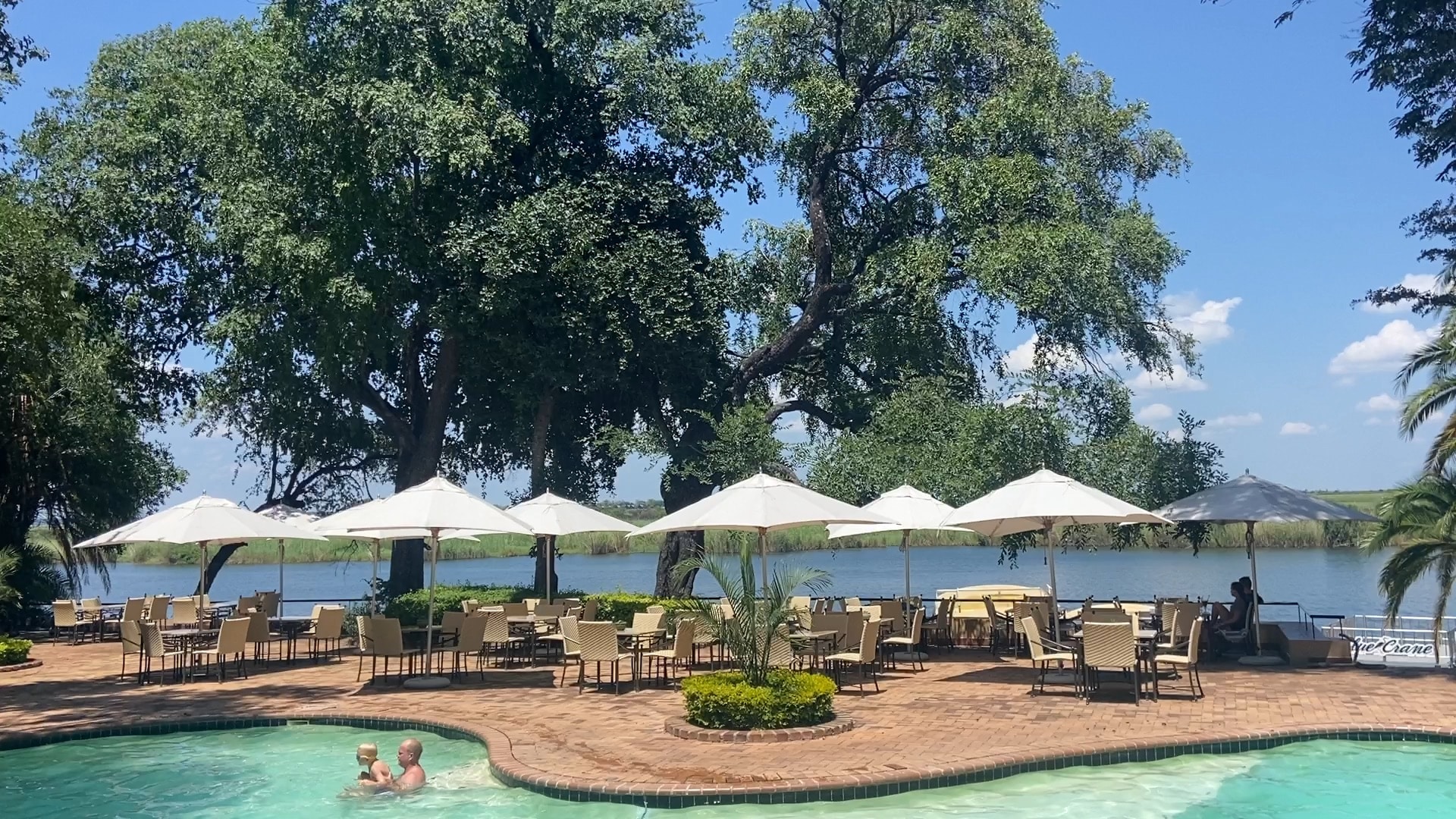
3. Chobe National Park, by boat
We use Kasane as a starting point to discover the Chobe National Park. There are actually three ways to do this…a boat cruise, a jeep safari or driving through the park with your own (or rental) 4WD car.
Initially we book a boat trip, but not through a hotel or tour operator. It's really crazy how much margin they add to it. No, just go to the harbor and ask around with a few locals. We see the animals and many birds from the water and that means we can get much closer. Most animals see you less as a danger from the water. A fantastic experience. During the three-hour boat trip, which actually takes place over a few square kilometers, we see many hippos, elephants, crocodiles, buffalos, impalas, ospreys and many, many other bird species. We are thoroughly enjoying ourselves.
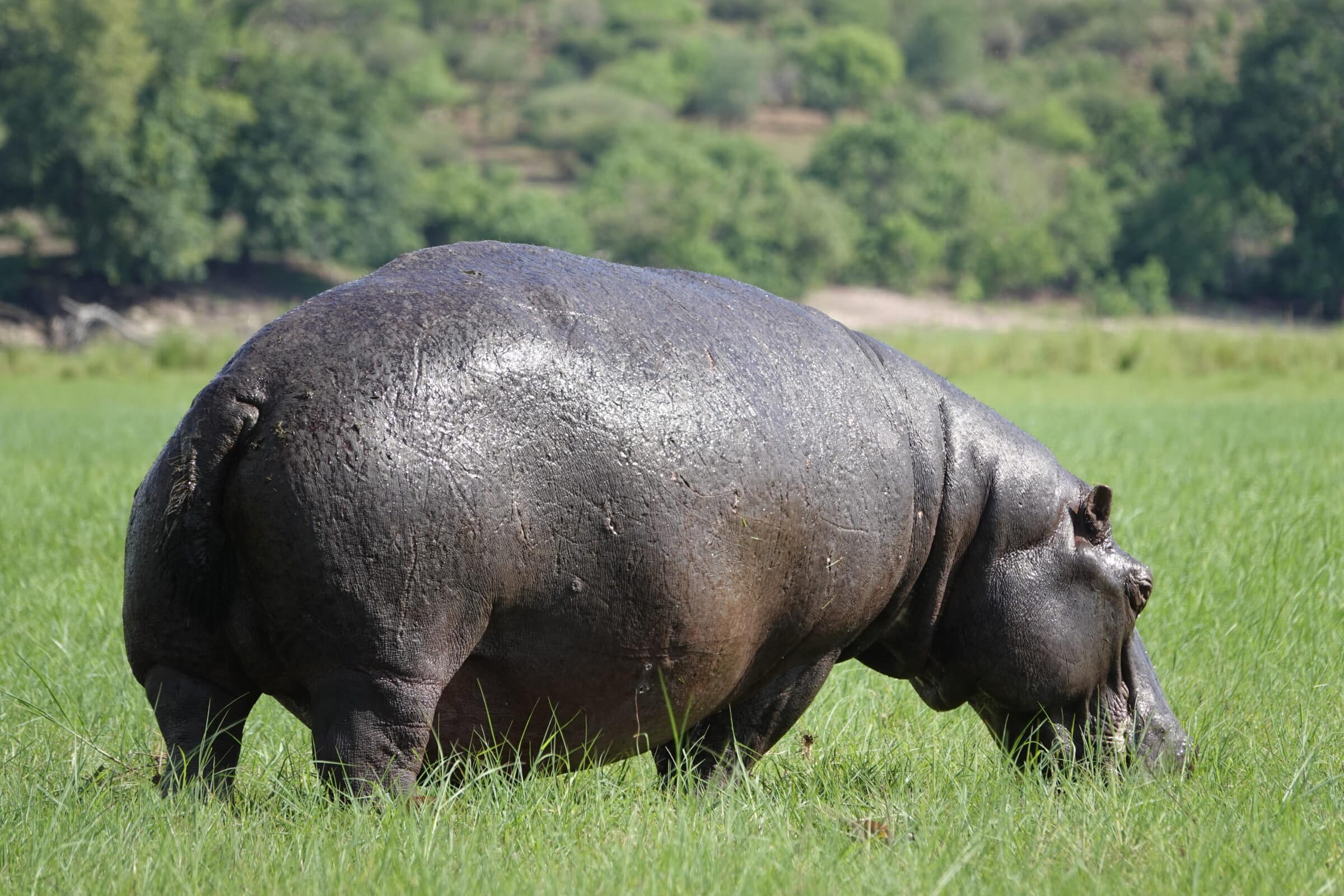
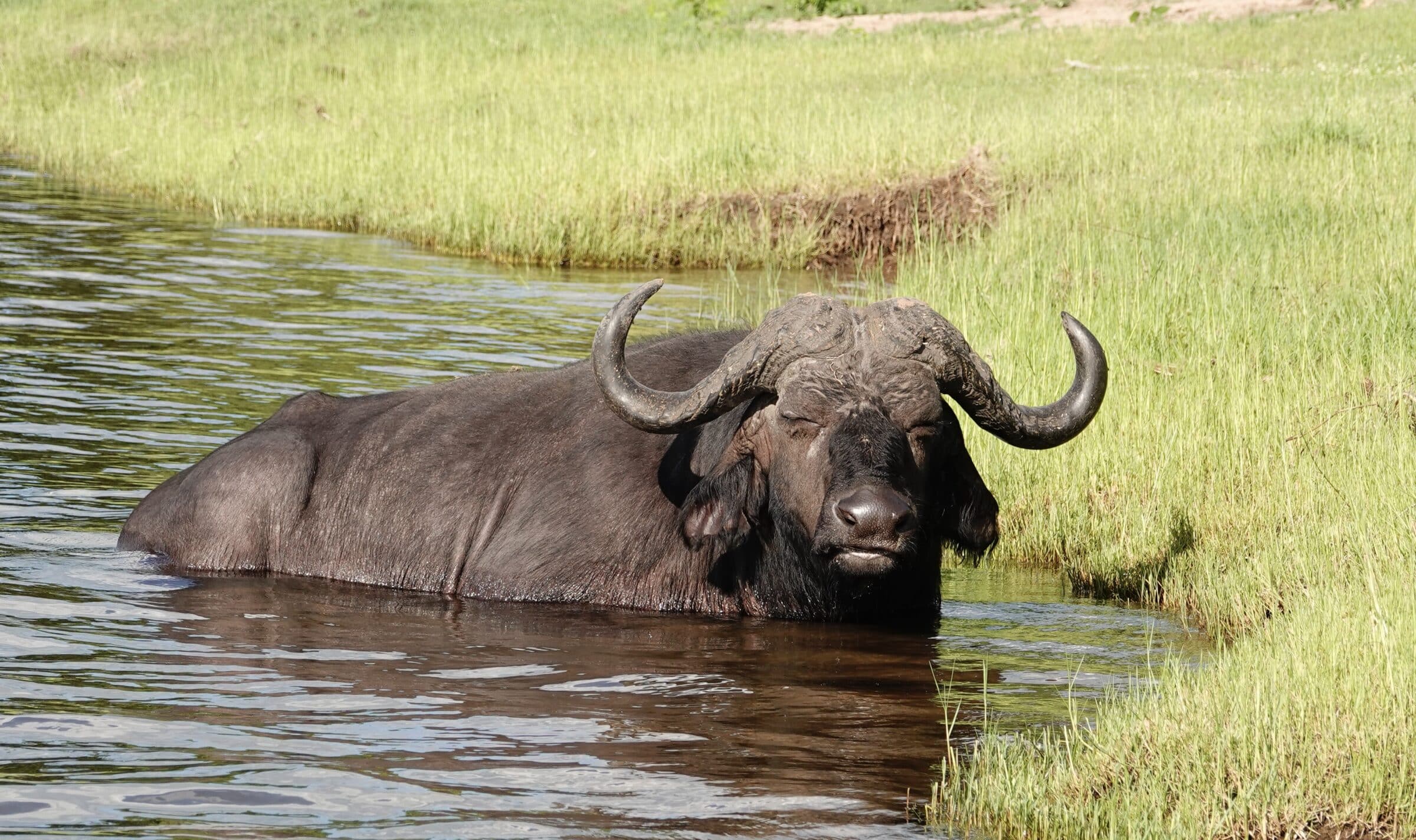
4. Chobe National Park, general
Chobe NP is located in the north of Botswana. With an area of 11.700 km2, the immense park is the size of about 3 Dutch provinces. Mainly known for its enormous population of elephants, but many other species of mammals and birds also have a habitat there. A park with a great variety between drier savannah and wetter areas.
The north side of the park is bordered by the Chobe River and is therefore extremely attractive to large game animals, especially in the dry season.
But further south around the Savuti area it is also teeming with the most beautiful animals.
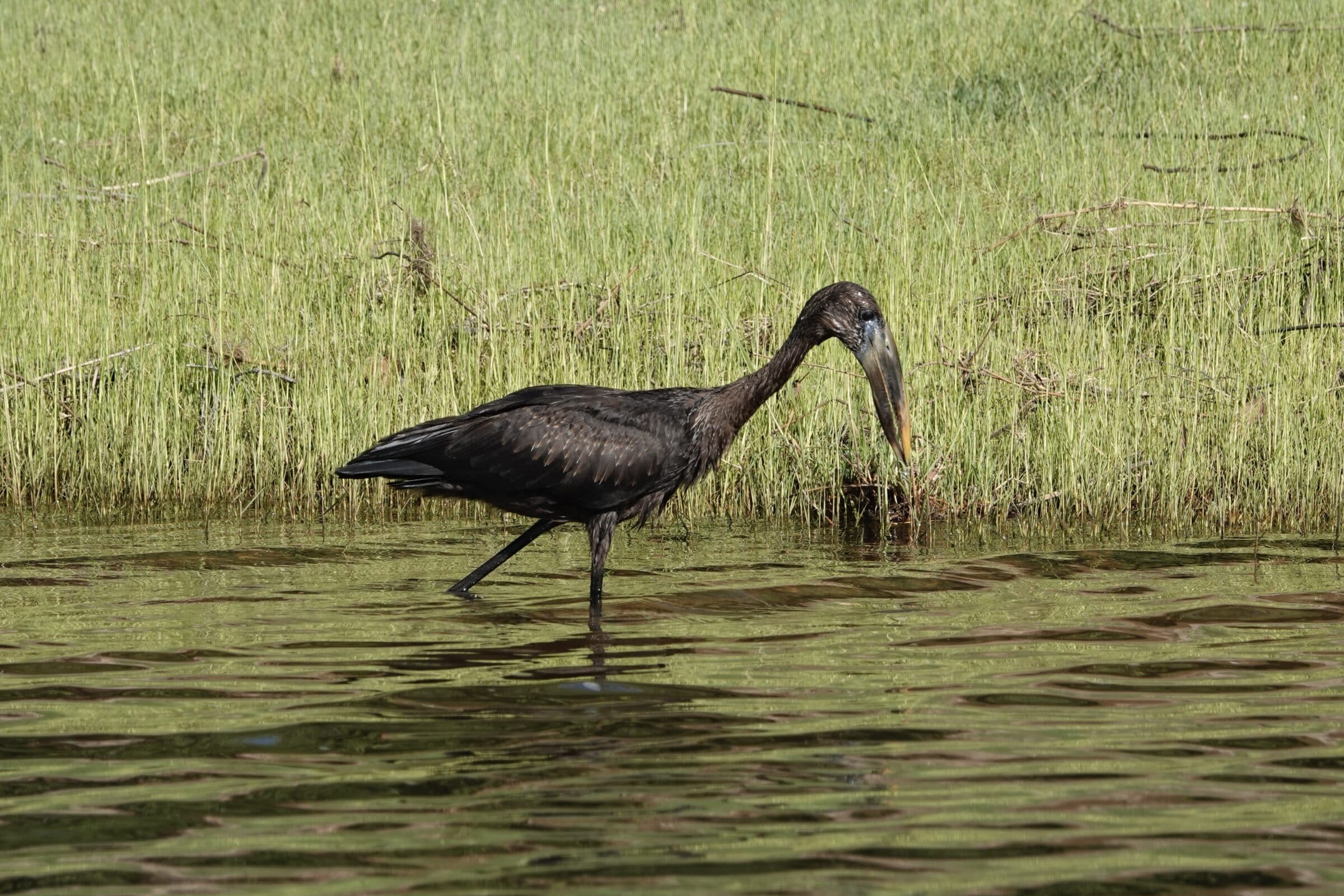
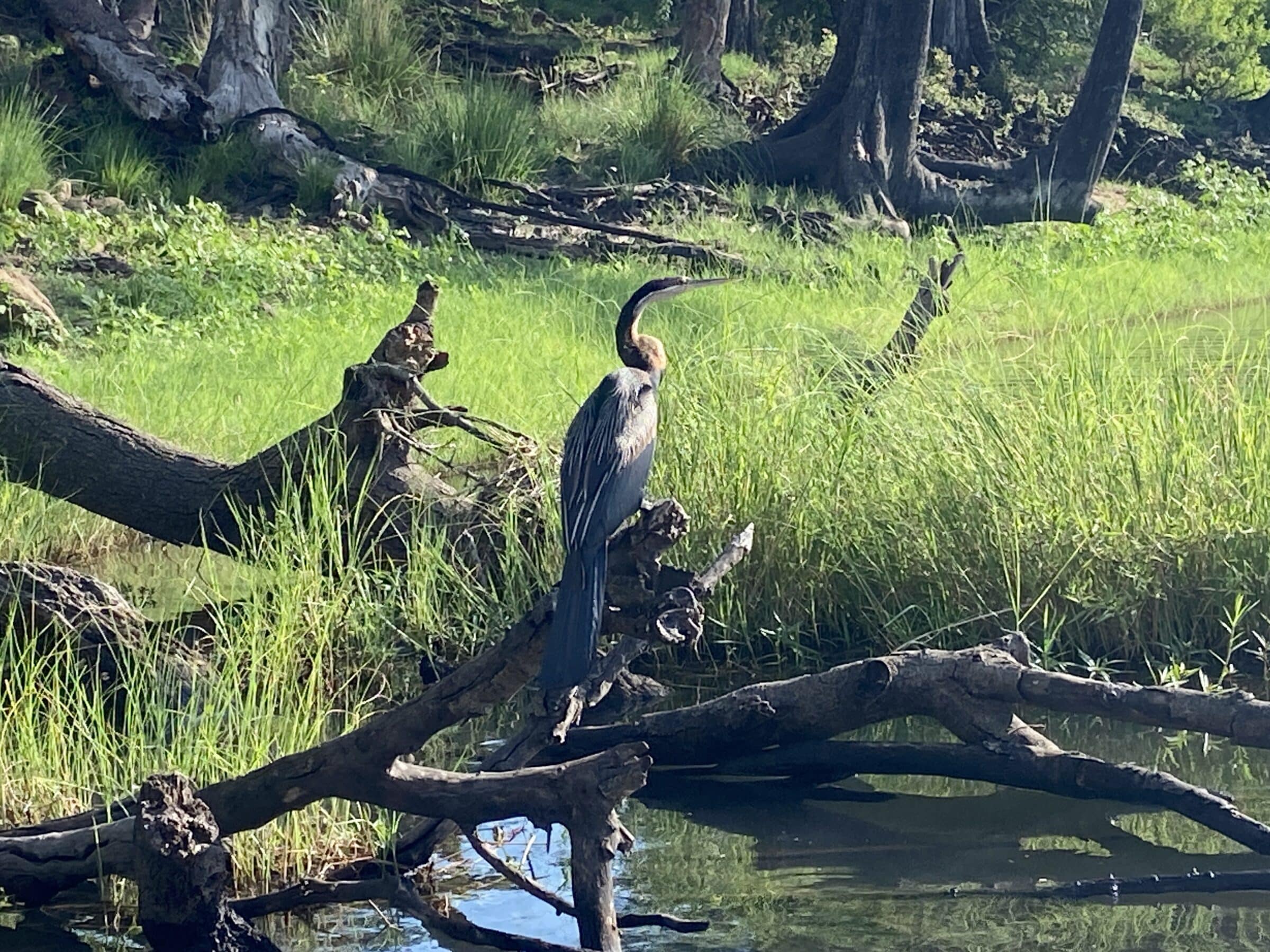
5. Chobe National Park, further south
To discover the more southern regions of the park, we pack our camper, zigzagging over countless paths in search of wildlife. Well, that turns out not to be that difficult.
We first drive parallel to the Chobe River and see a lot of animals. We take a lot of photos, but let's be honest… when you see so much wildlife you won't be surprised by one more or less elephant.
Then at a certain point you become more specific, then you want to photograph the animals in a special setting. And so we see something new every day. Towards the end of the afternoon the sky turns pitch black. A big thunderstorm falls from the sky. In no time the trails become very challenging. And the wild camping spot we had in mind is also completely flooded. Fortunately, we later find a higher spot where we spend the night. We involuntarily look around more often to see if there are any lions nearby. When it gets dark we quickly go inside.
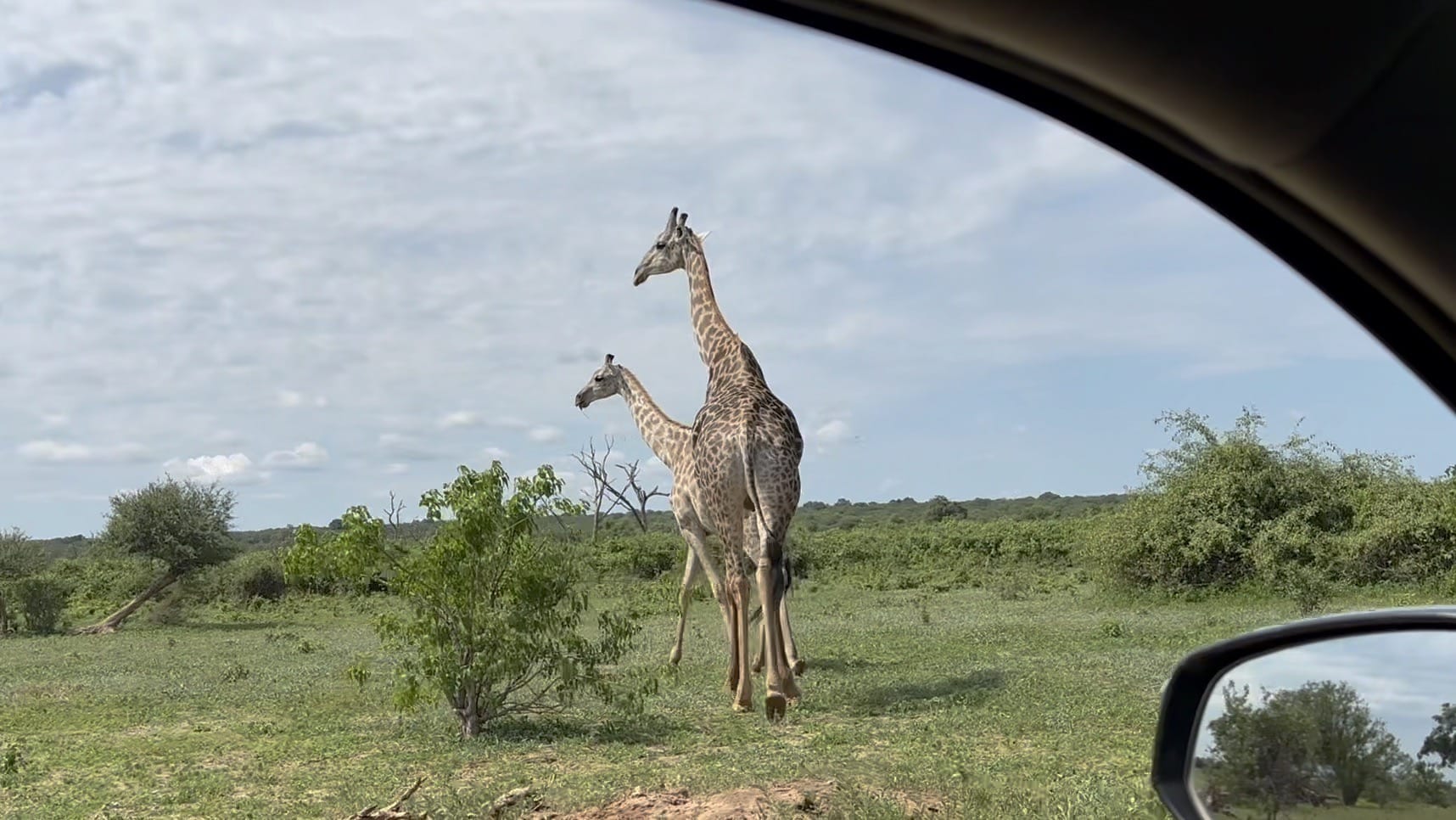
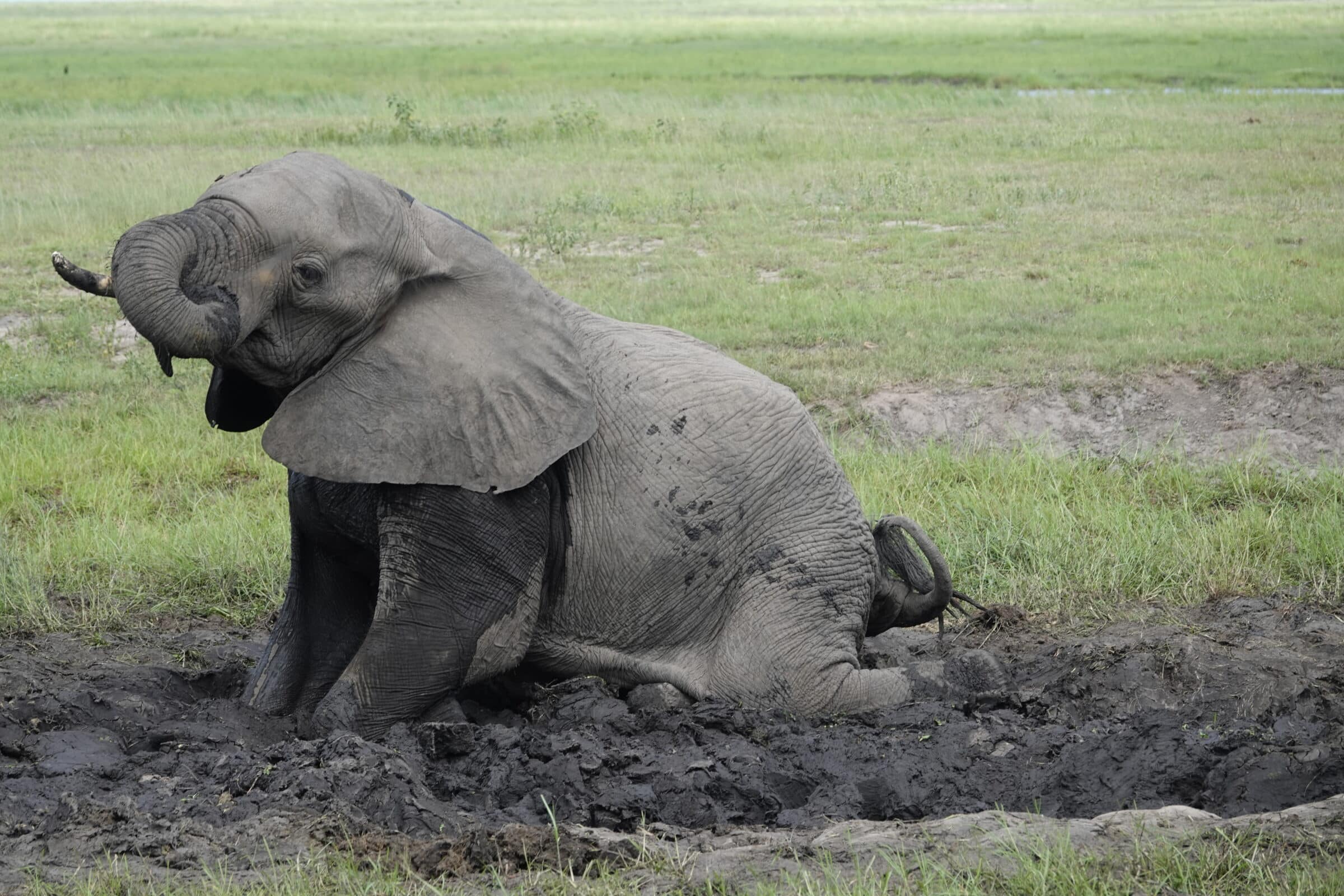
6.Moremi Game Reserve
It is located south of Chobe NP and north of the town of Maun Moremi Game Reserve.
We are forced to spend the night at a campsite in the area. We are too late to reach the exit and have no choice but to pay more than 80 euros excluding park entrance fees for a night at an unfenced campsite. At night we hear the sounds of grazing hippos and roaring lions around us, that makes it special.
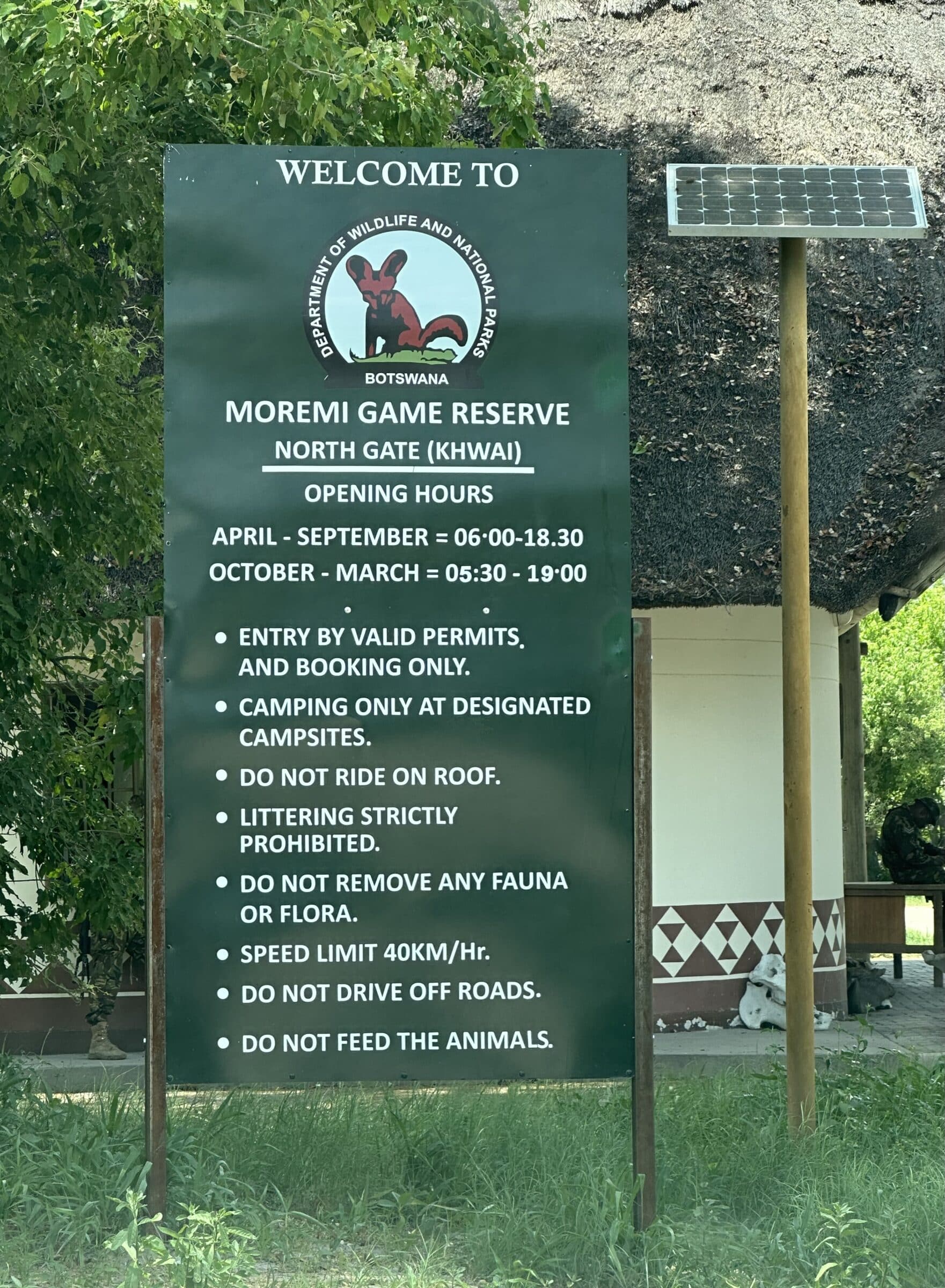
In the park we pass a number of rickety bridges and suddenly find ourselves in front of a river crossing. That happens to us often, but three crocodiles swim right at the spot where we cross the river. So just inspecting the subsurface of the river is out of the question... and what if we get stuck in the middle...?
Immediately next to the ford are the remains of an elephant, that is, the carcass and a thick skin. Probably attacked by several lions while drinking. We decide to take a detour and take a rickety bridge. Successfully!
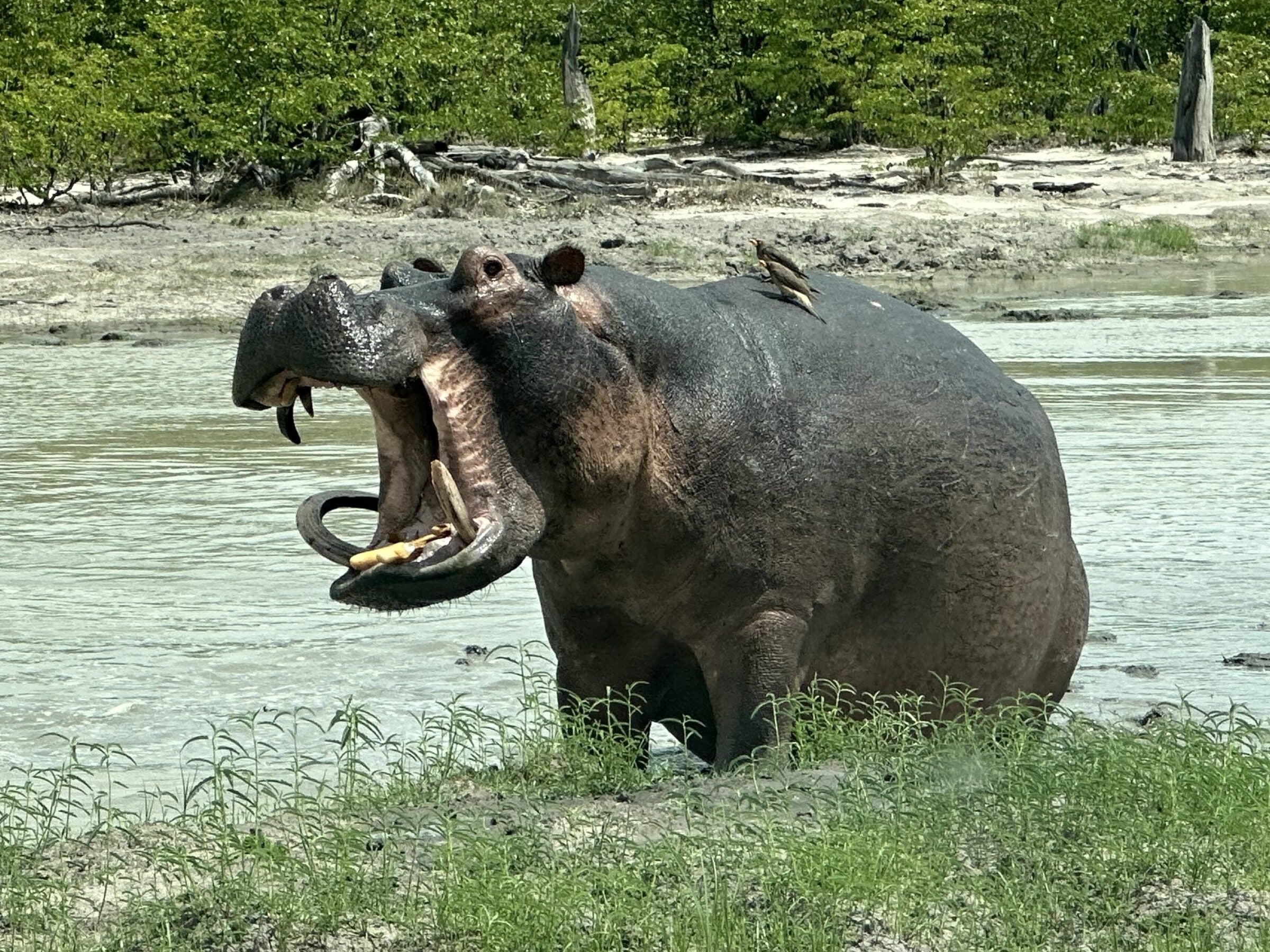
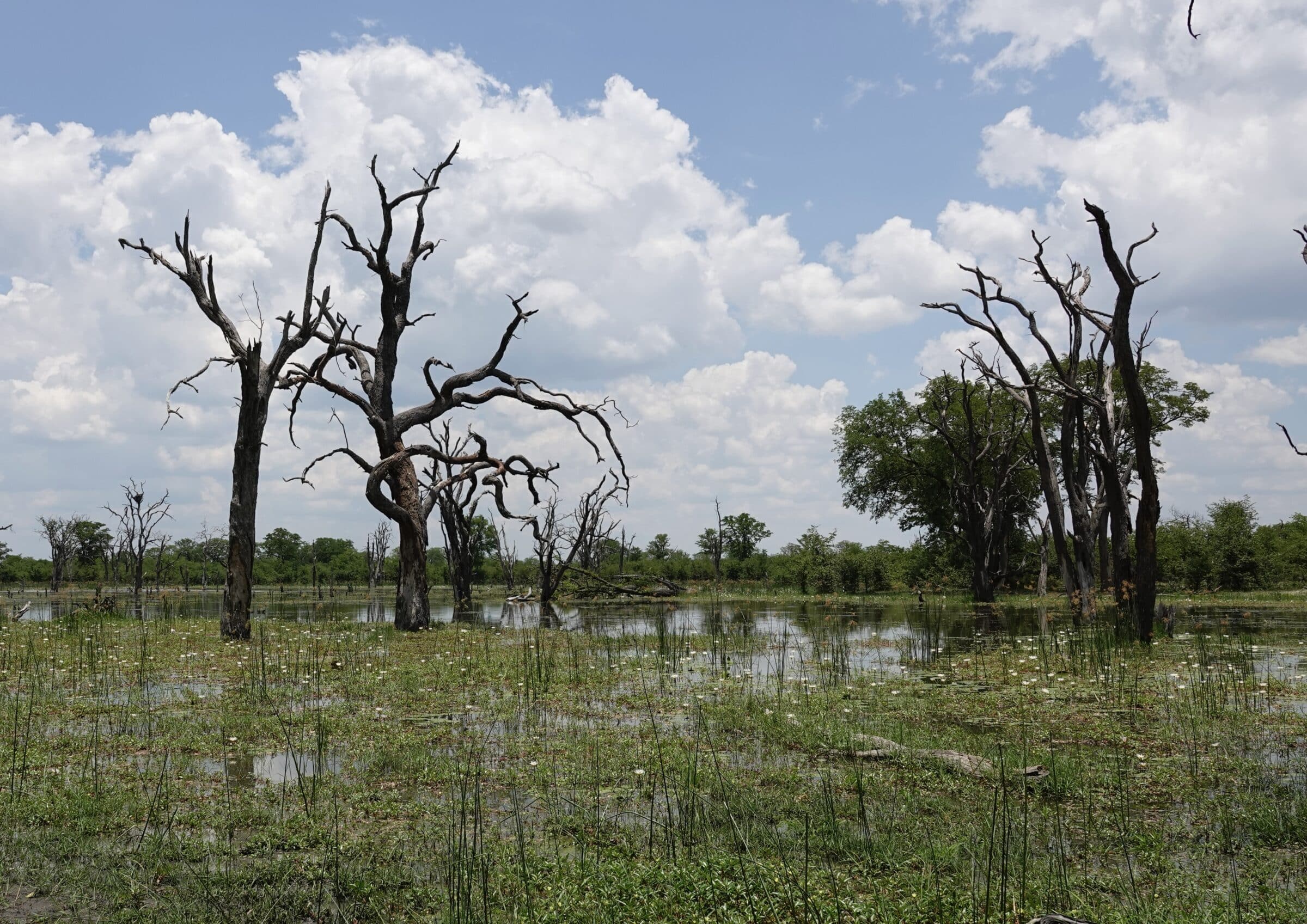
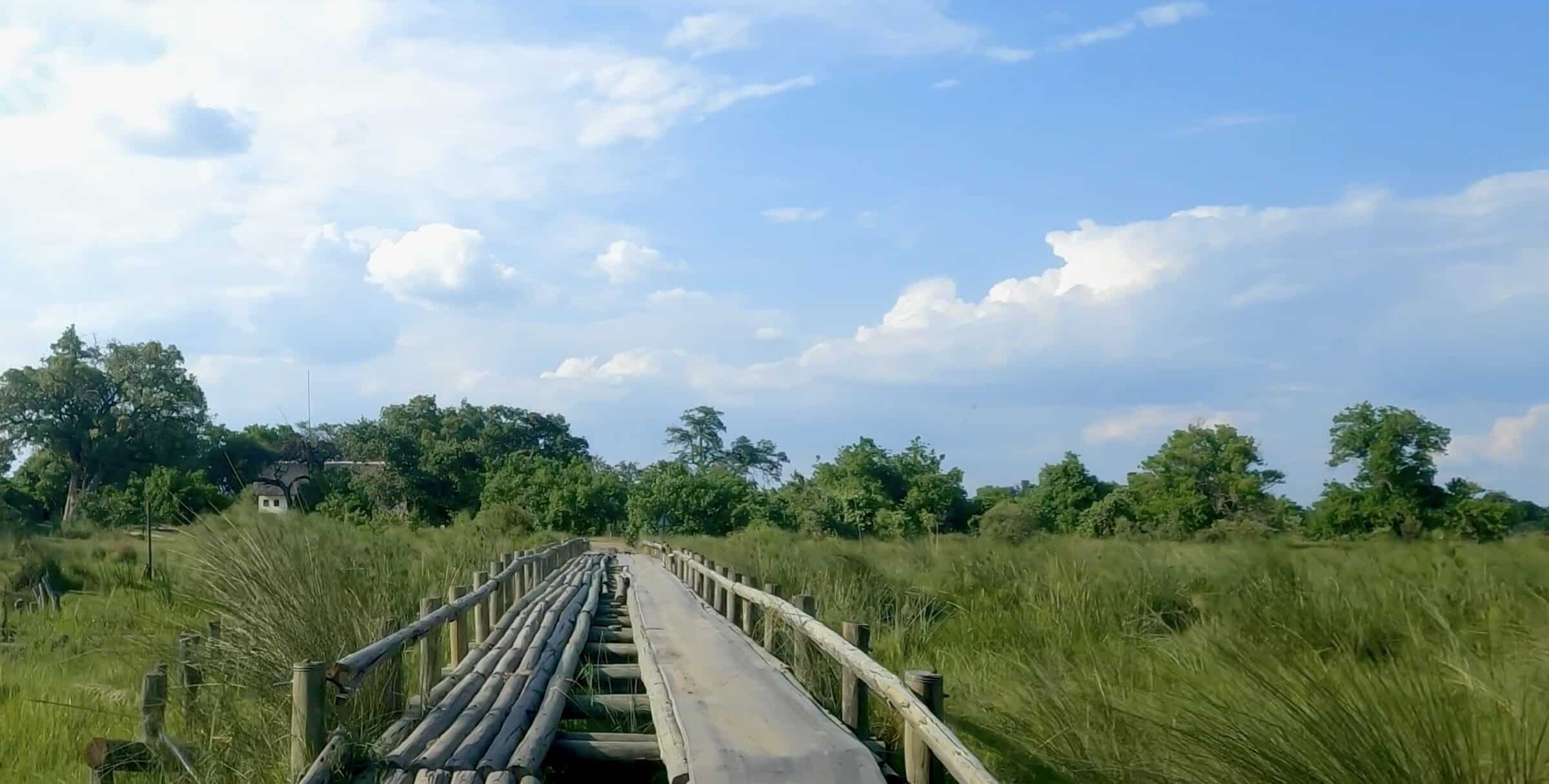
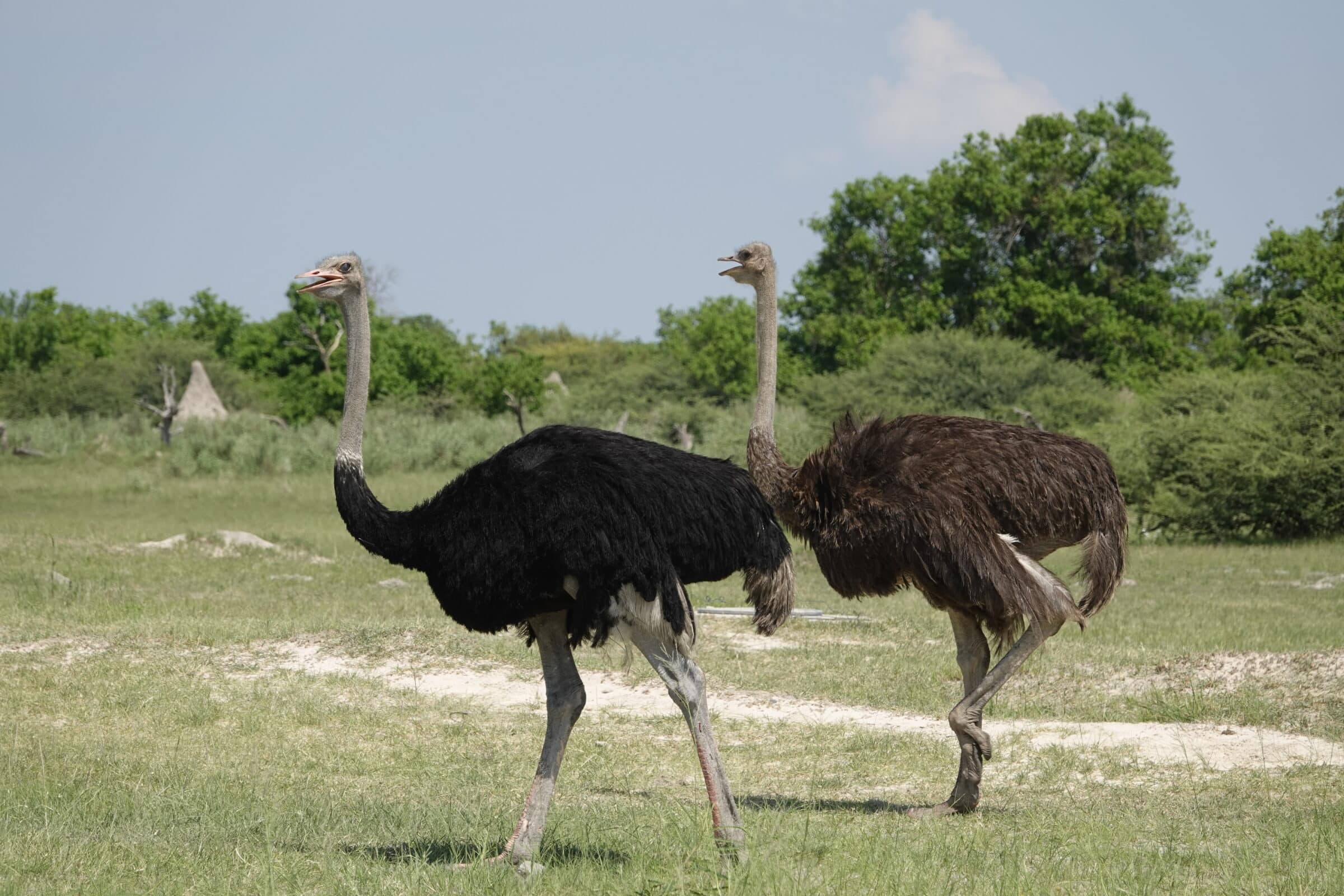
7. Lions
Zebras, giraffes and elephants are plenty here, not that difficult to find. But lions and leopards, that's a different story. You have to have luck and patience.
For example, we already missed lions in South Luangwa NP in Zambia and in Chobe NP, while they should have been there. But we remain calm, our time will come.
And yes, unsuspectingly we tour the Moremi Game Reserve while Grietje suddenly comes face to face with a pack of lions to her right. Very exciting at first, but if the lions remain quietly under the tree, we can safely take some pictures from the car. There are twelve of them, wow, twelve at once.
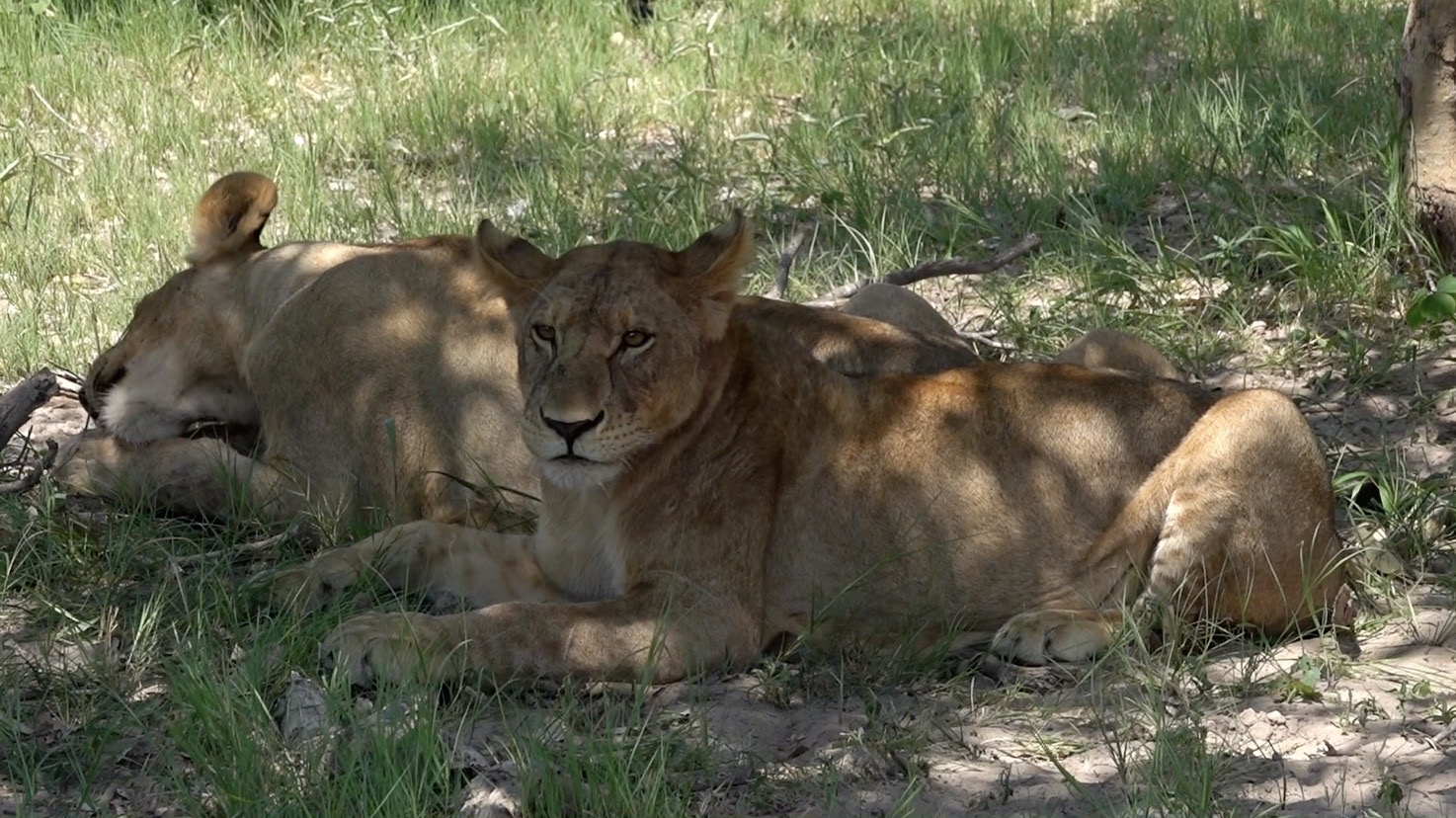
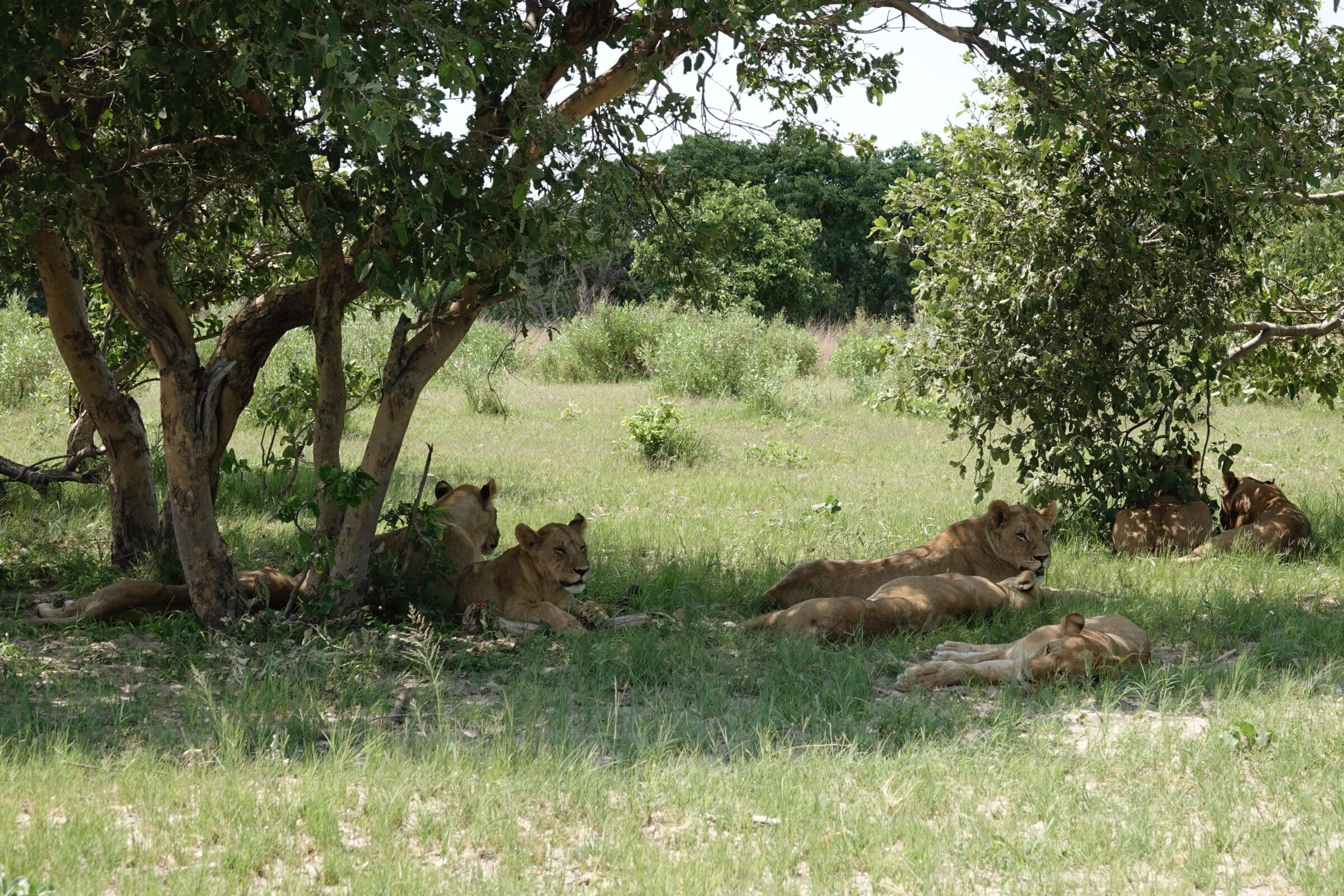
They are clearly suffering from the heat, they are panting and stretching their muscular bodies once again. Two are still chewing on bloody bones, probably last night's prey.
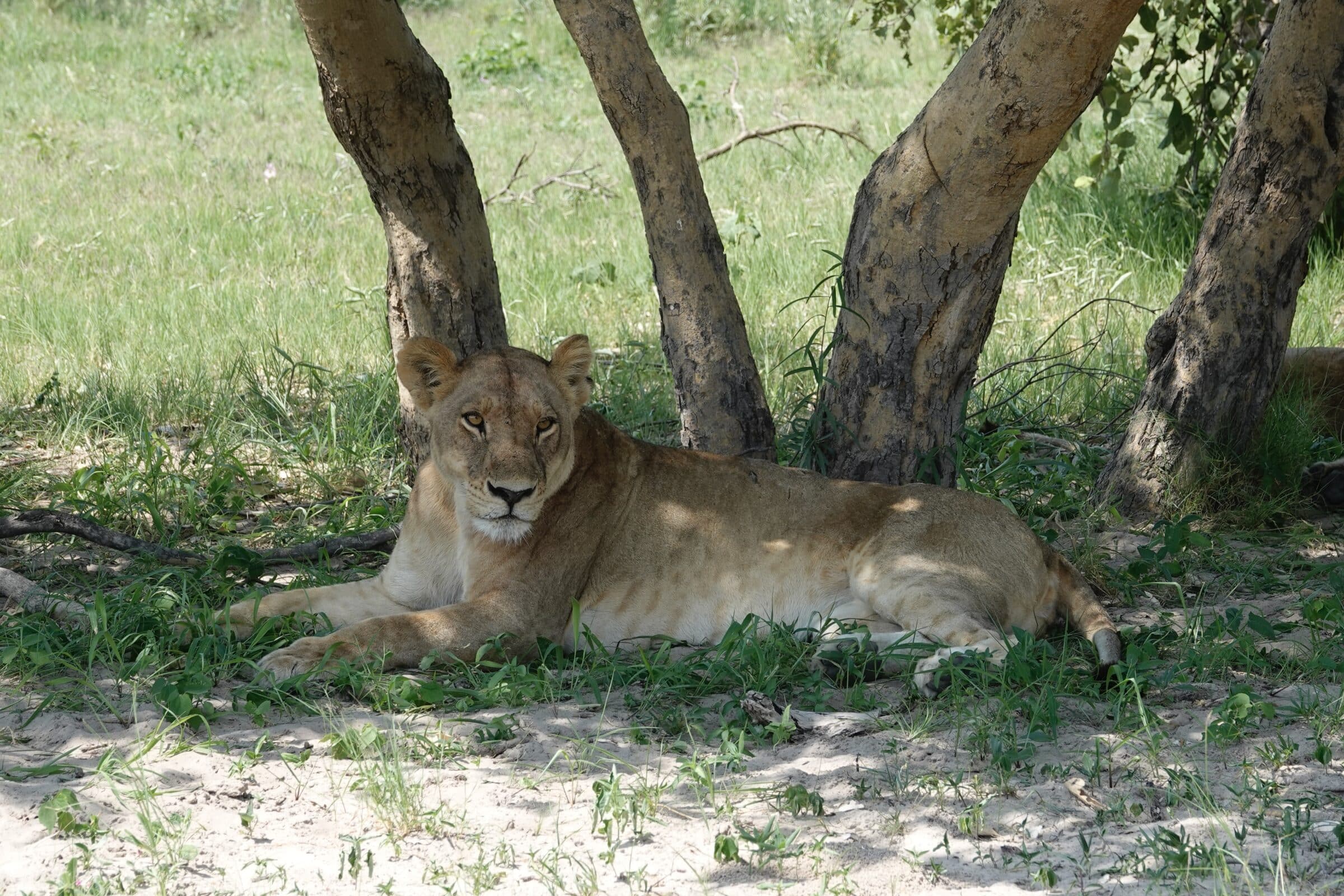
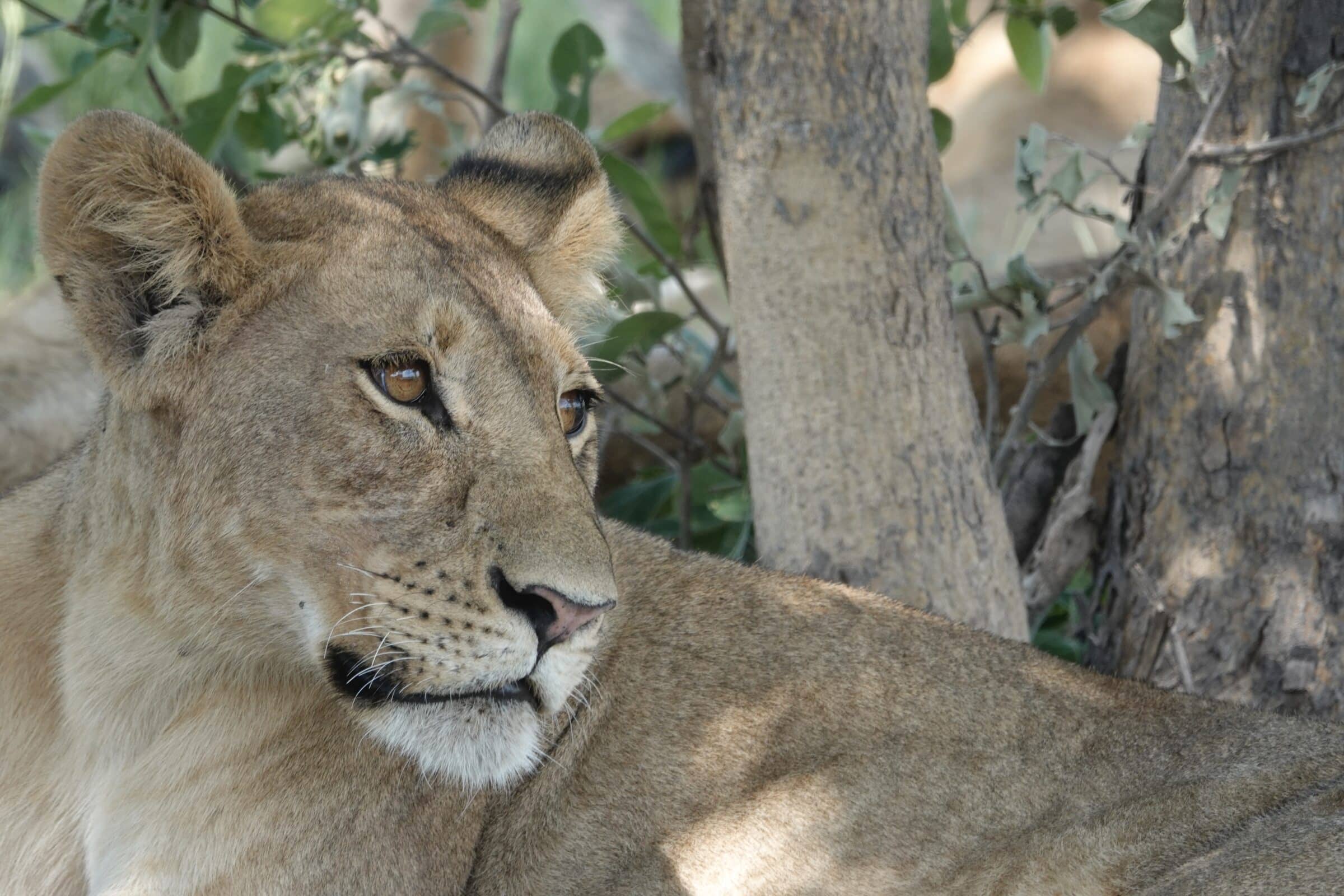
8. Mokoro canoe trip
On the way to Maun we spend the night at a campsite halfway. Here we inquire about the Mokoro canoe trips in the adjacent area Okavango delta are organised. A Mokoro is a one-piece canoe cut from a tree trunk. He is pushed along by a “poler” with a tree. That's how they do it in Venice too. Only the setting is slightly different here…. You slide slowly through the water of the beautiful delta, a water-rich area as large as half of the Netherlands. You have a good chance of spotting wildlife along the way. There's plenty!
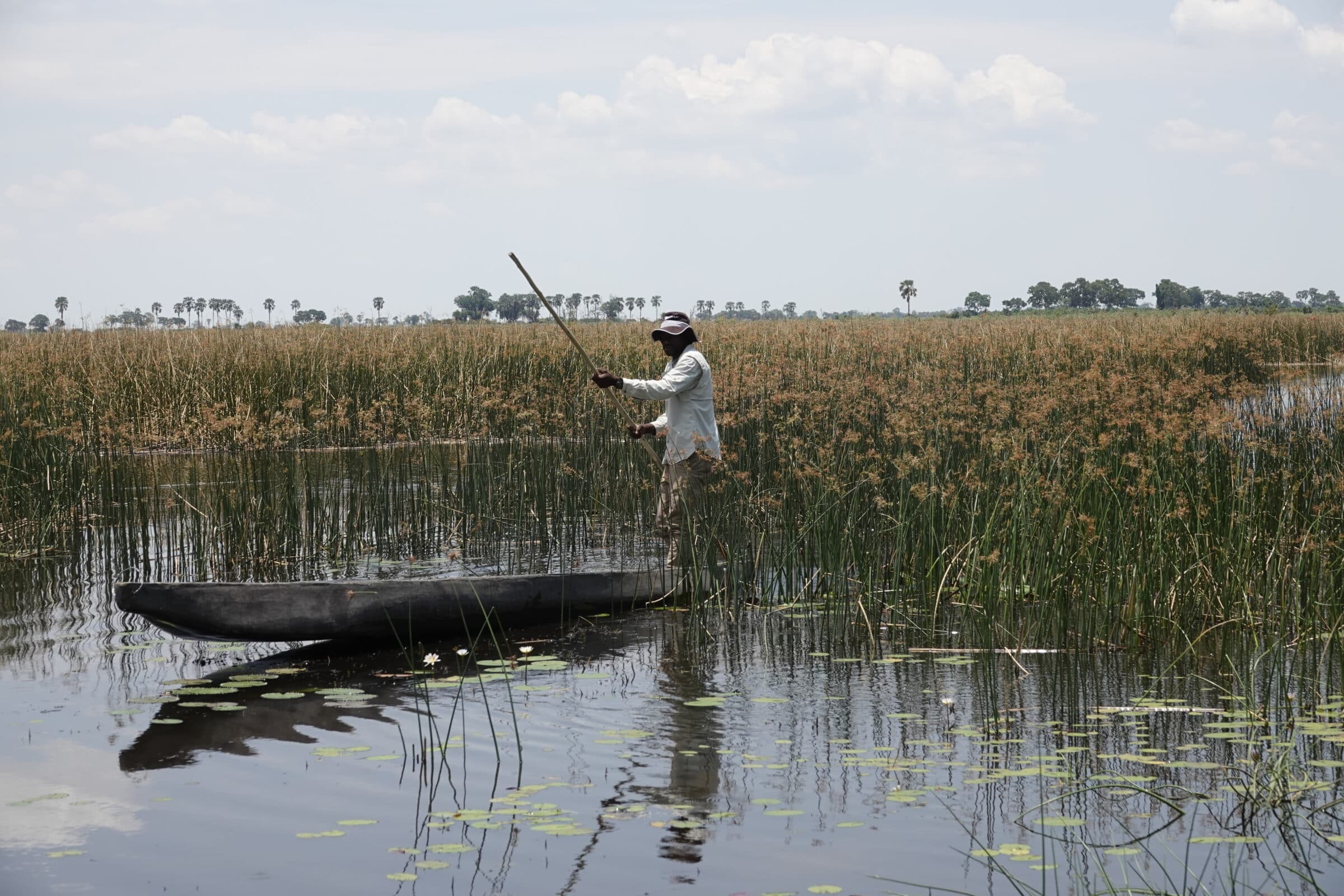
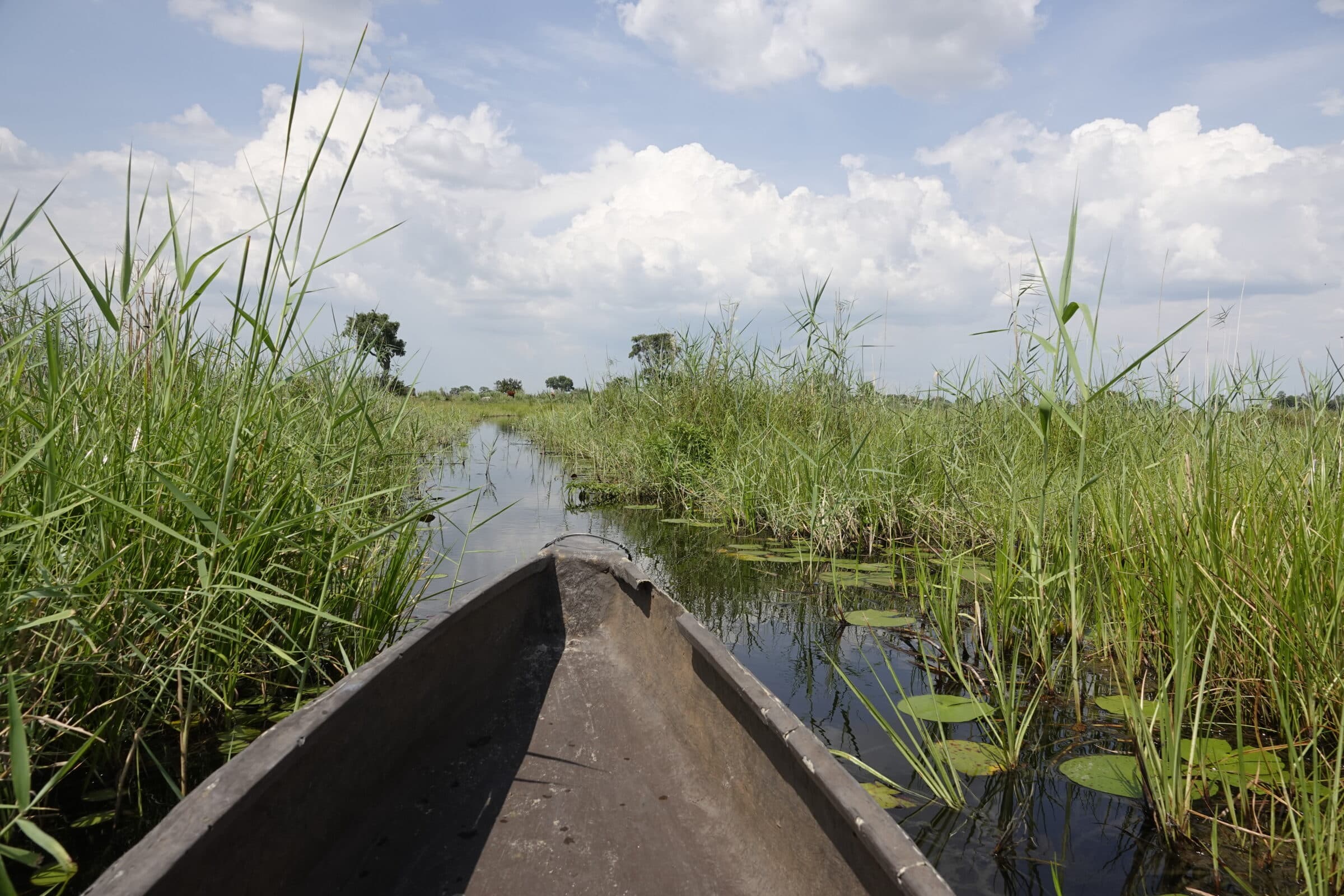
Instead of booking a terribly overpriced safari tour of € 200,00 per person through the campsite and a tour operator, we decide to go into the area ourselves. After an hour of bumping along real 4×4 roads we reach the village of Morutsa, in the middle of the delta.
Upon arrival, a villager immediately approaches us. He walks to the “bell” and gives it a huge blow. The bell is an old rim hanging from a tree that he strikes with an iron bar.
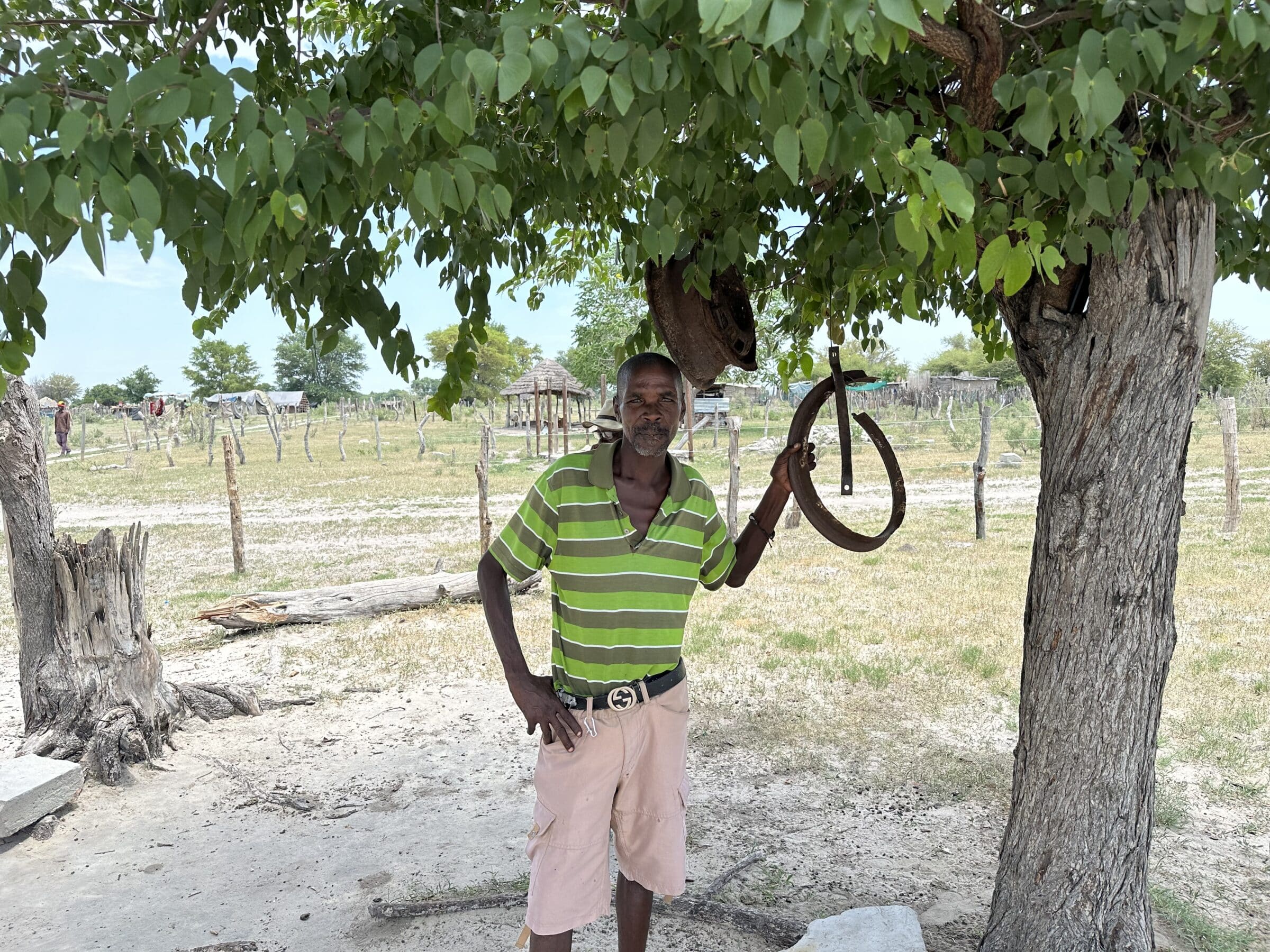
Men and women from the village come from all over.
They are the guides/polers who give tourists a tour of the area. Through a system - which we have not been able to determine exactly how it works - one poler is appointed who is our guide. The rest drips off.
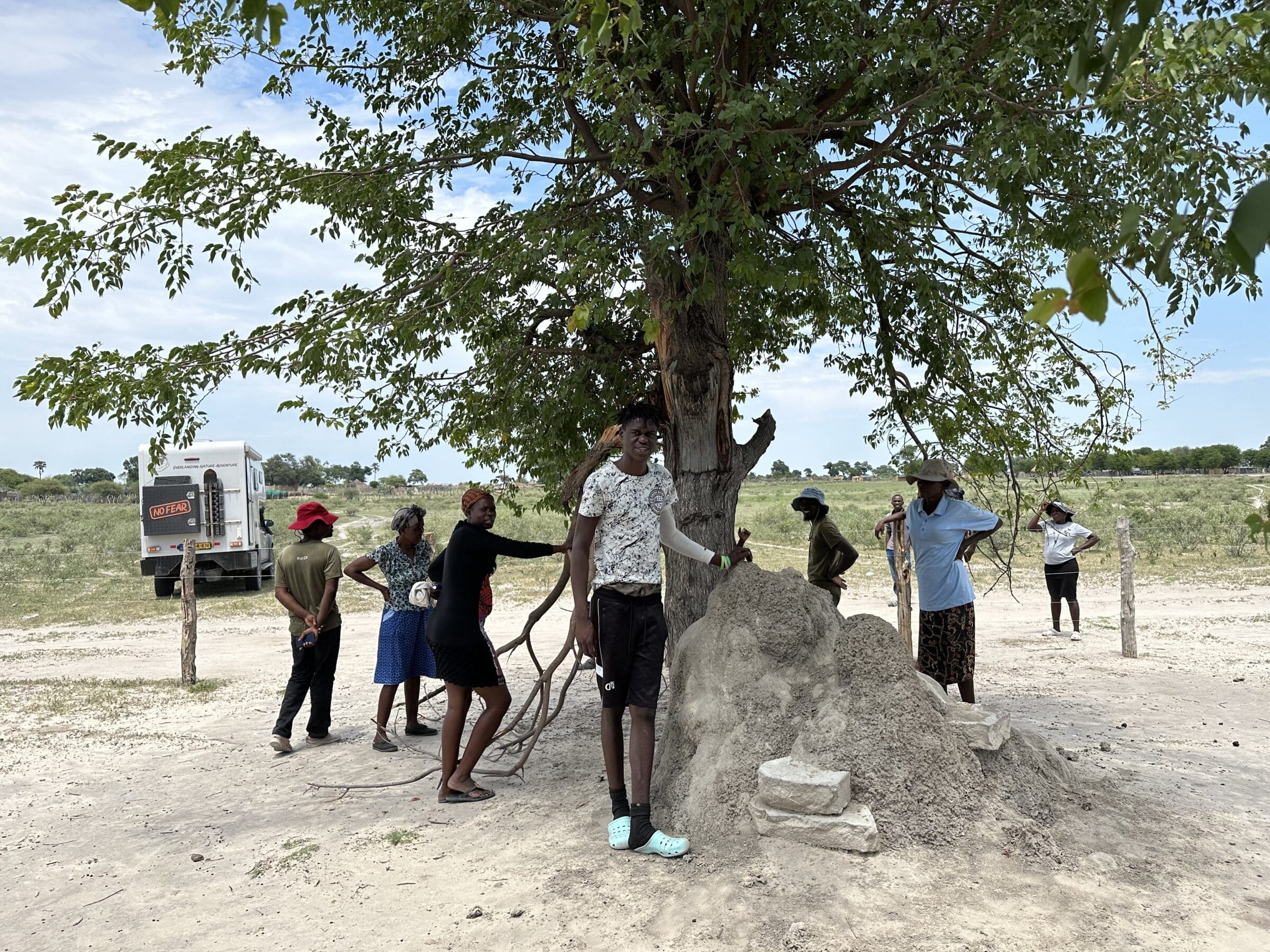
We pay the equivalent of €40,00 for the two of us. Very different from what the tour operators in Maun ask for. About 10 times as expensive...oh yes, you do get a packed lunch.
The tour itself, with the friendly guide, is a wonderfully relaxing trip through the waters of the unique Okavango delta, although we were terribly hot. About 40 degrees in full sun on the water without a breath of wind. For background information about the beautiful Okavango delta click here. (Wikipedia)
We can spend the night next to the guide's house, well house… he stays in a tent and waits for tourists there every day. It has already been 14 days since his last tour. In the evening he comes to sit with us for a nice chat. He talks about his life. He has a wife, two children and a mother in Maun to support. Tomorrow he goes to Maun to buy a pair of shoes for one of his children. This child is going to school for the first time and with the merit of our tour, a pair of new shoes should be in order.
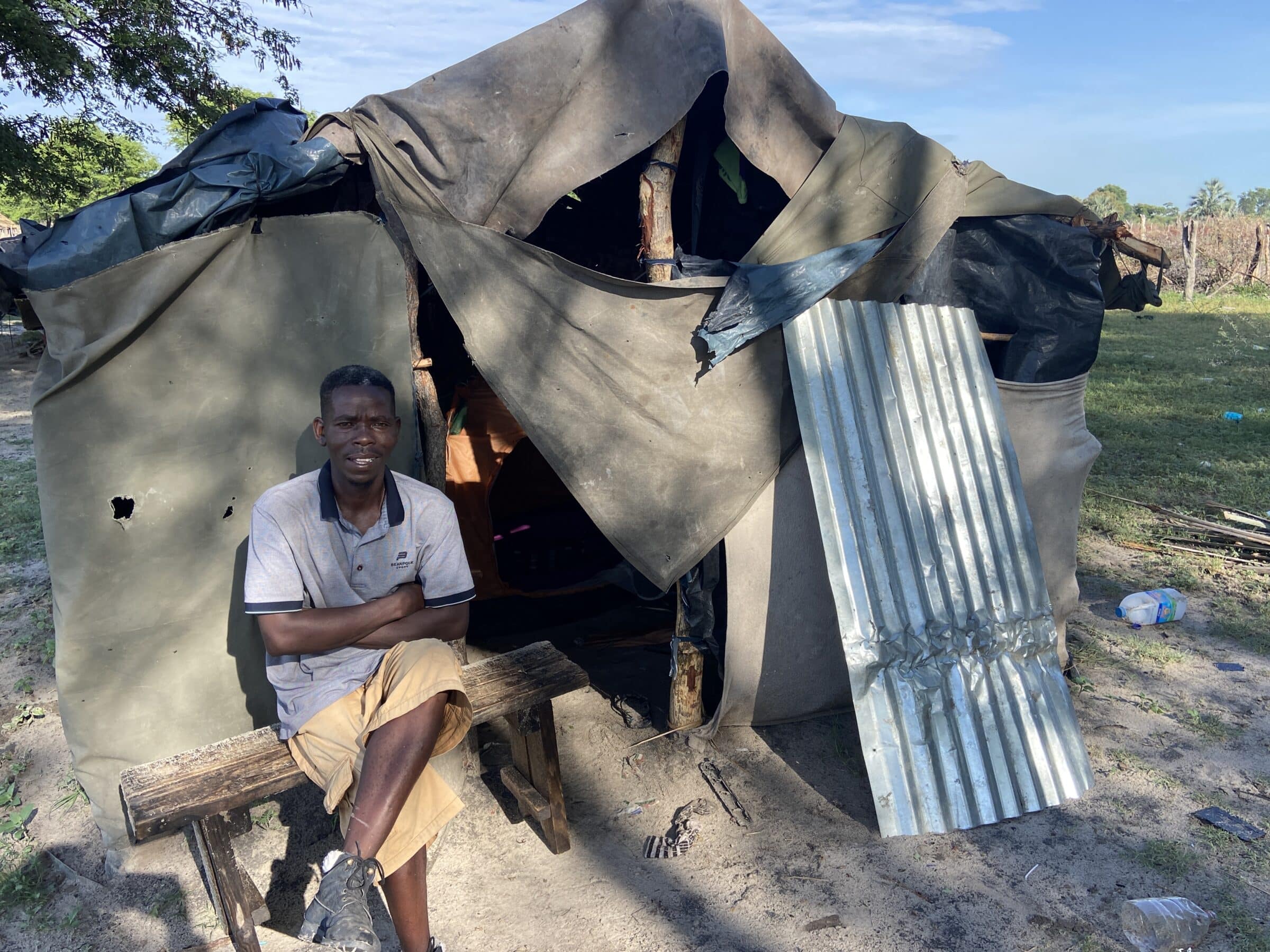
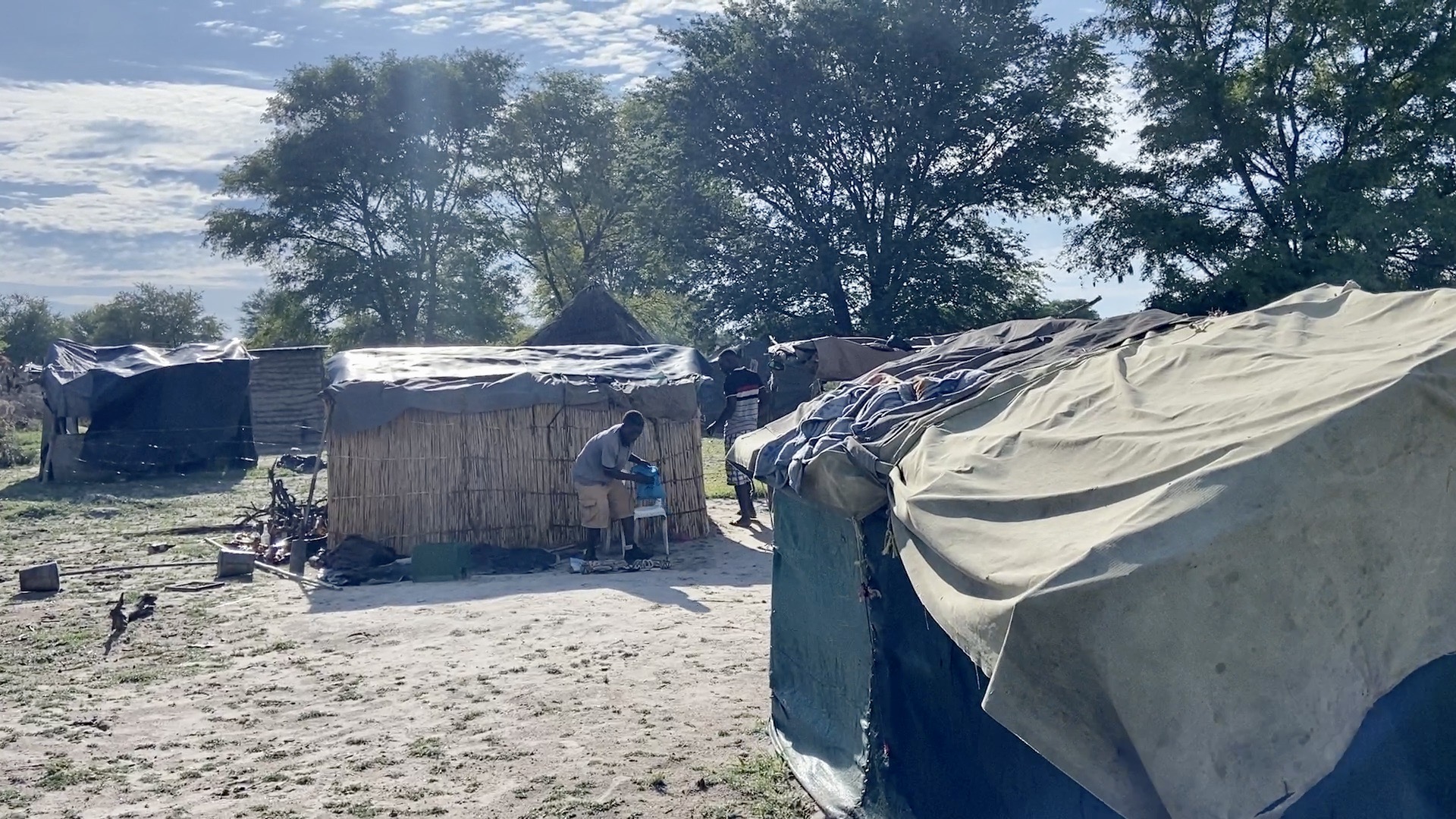
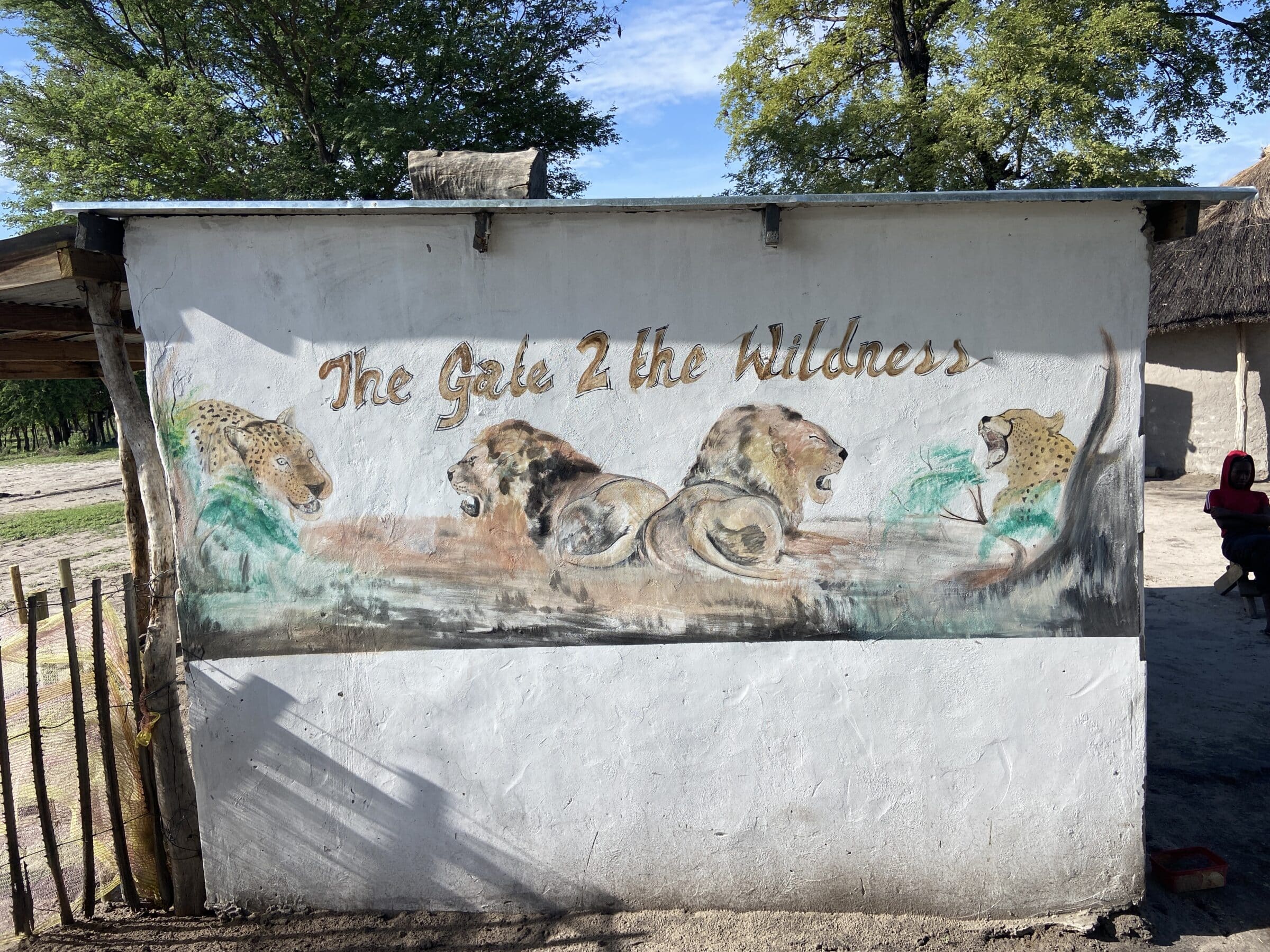
9. Makgadikgadi National Park
The Makgadikgadi Pans are remnants of inland saline lakes that dried up about 10 to 20 thousand years ago. What remains are endless plains of a kind of salty loam, sometimes sparsely covered with grasses. The bottom partly retains water, but this is difficult to see. As far as the eye can see, on all sides, nothing. Before we visit the park, we are warned from all sides about the dangers of the quicksand-like bottom. At least when it's wet. When dry it is as hard as concrete.
Countless stories are known of people who had to leave their sinking overlander vehicle behind.
We wanted, among other things Kubu Island visit an island in the middle of such a “pan”. But no one could tell us in advance what the situation was like, so we're going to give it a try. But when we arrive at the pan, we decide not to take the risk.
On the way back we met two South African vehicles with people who wanted to go. We can go with them in a convoy, that seems much safer. However, then we come across another car with men who have just returned from the island and strongly advise us against going there. We decide to follow their advice and have to make do with the internet photos of the beautiful baobabs that grow there.
It is a great area to wander around the pans. There is a lot of wildlife and the views are endless.
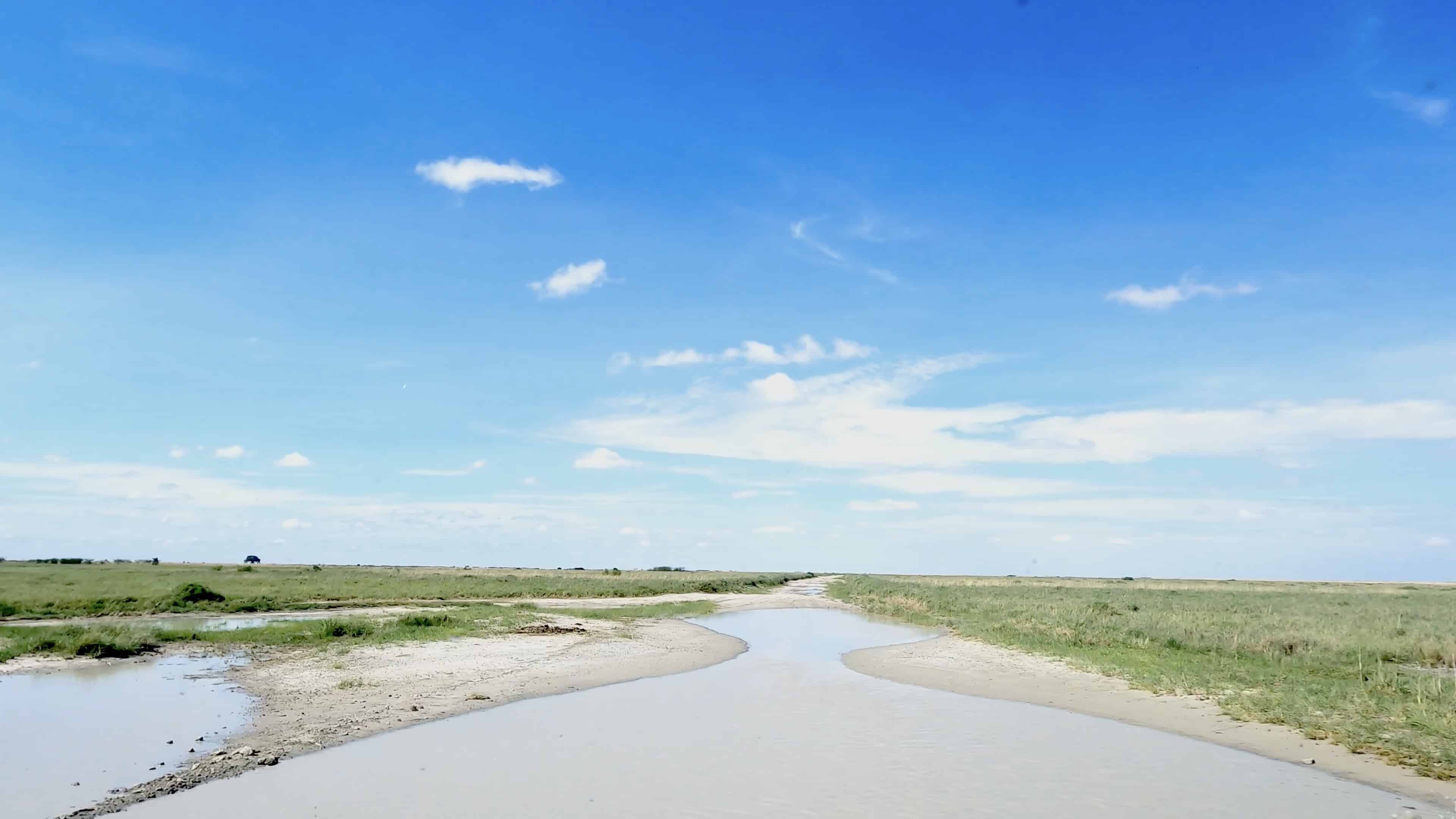
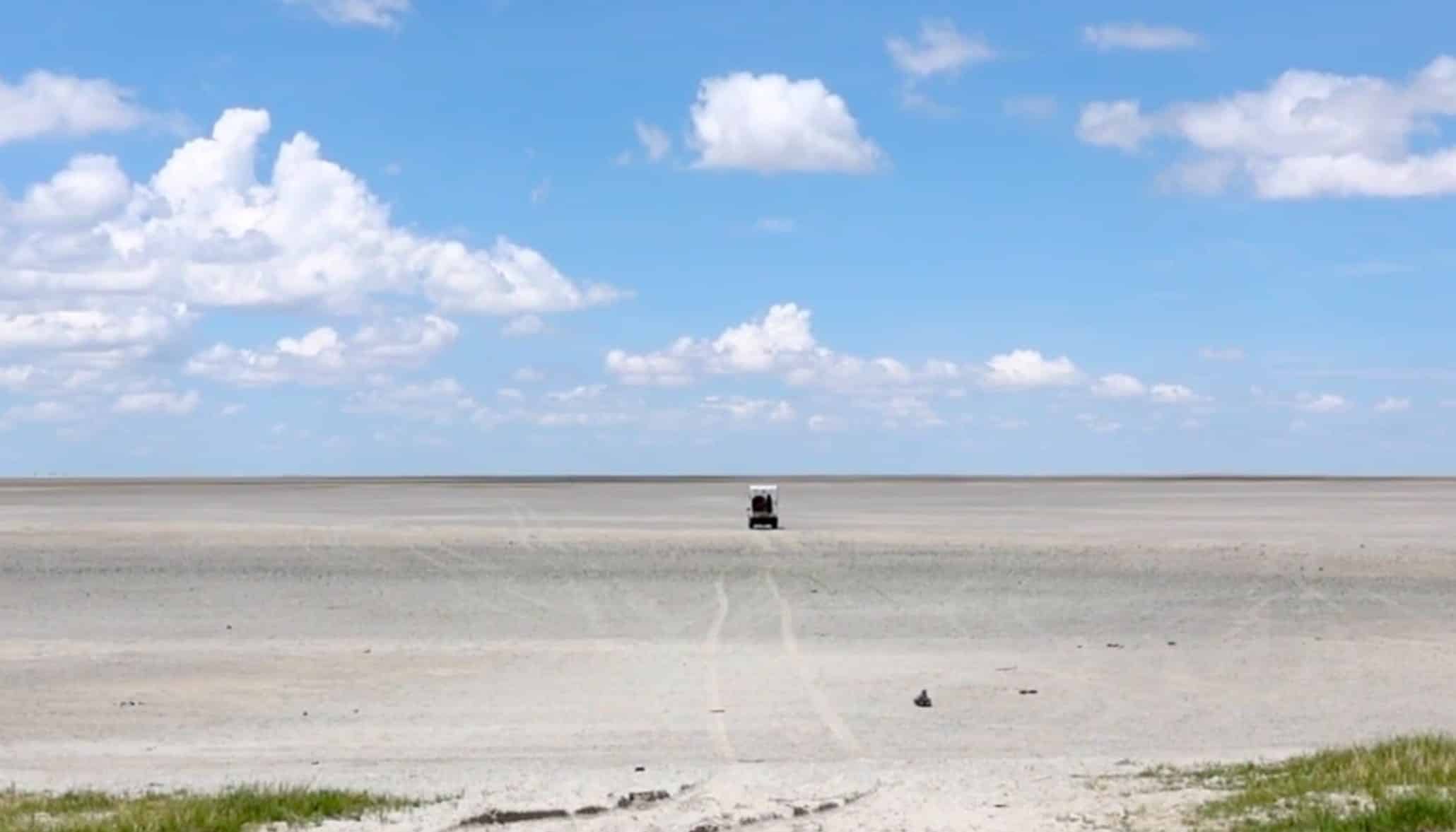
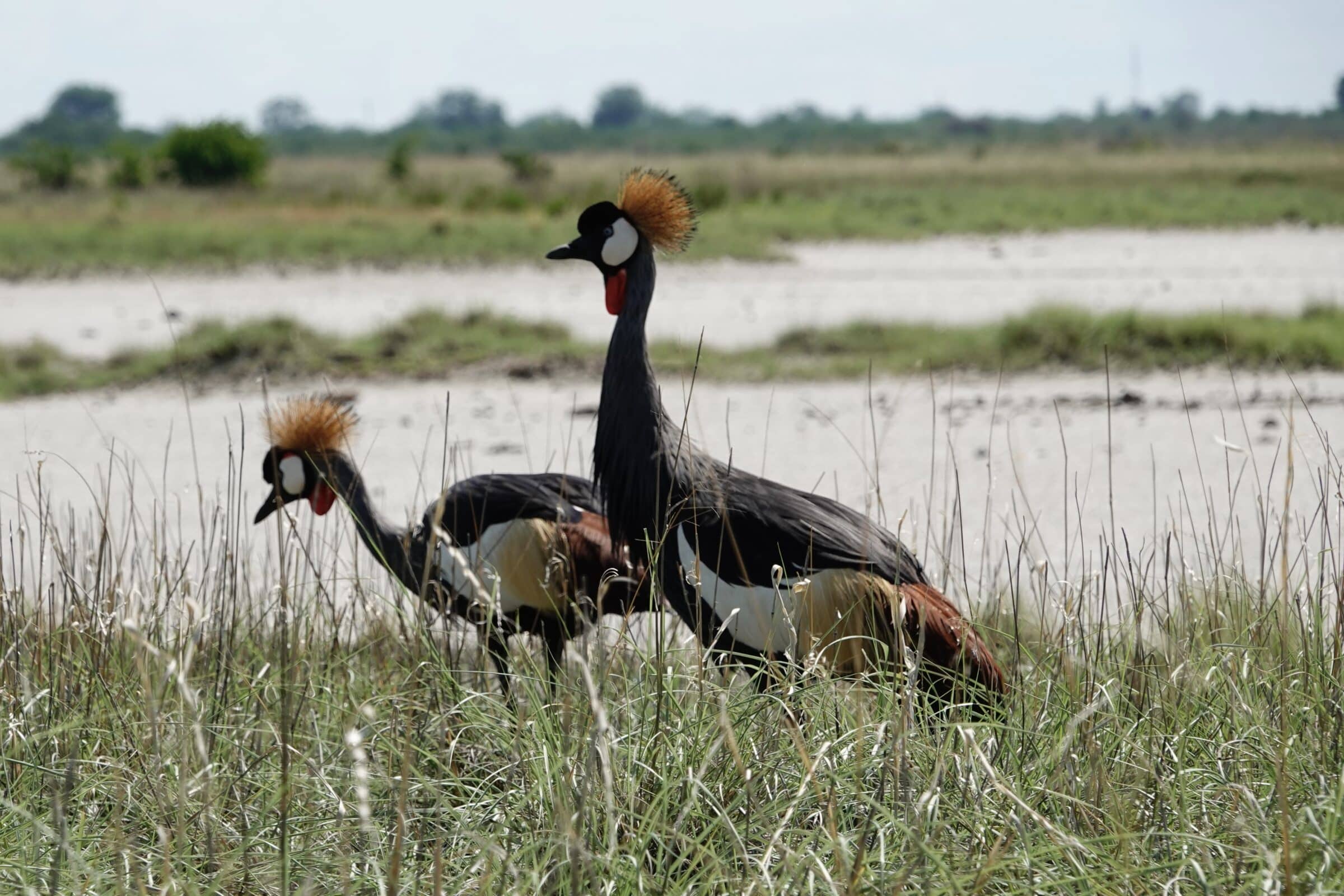
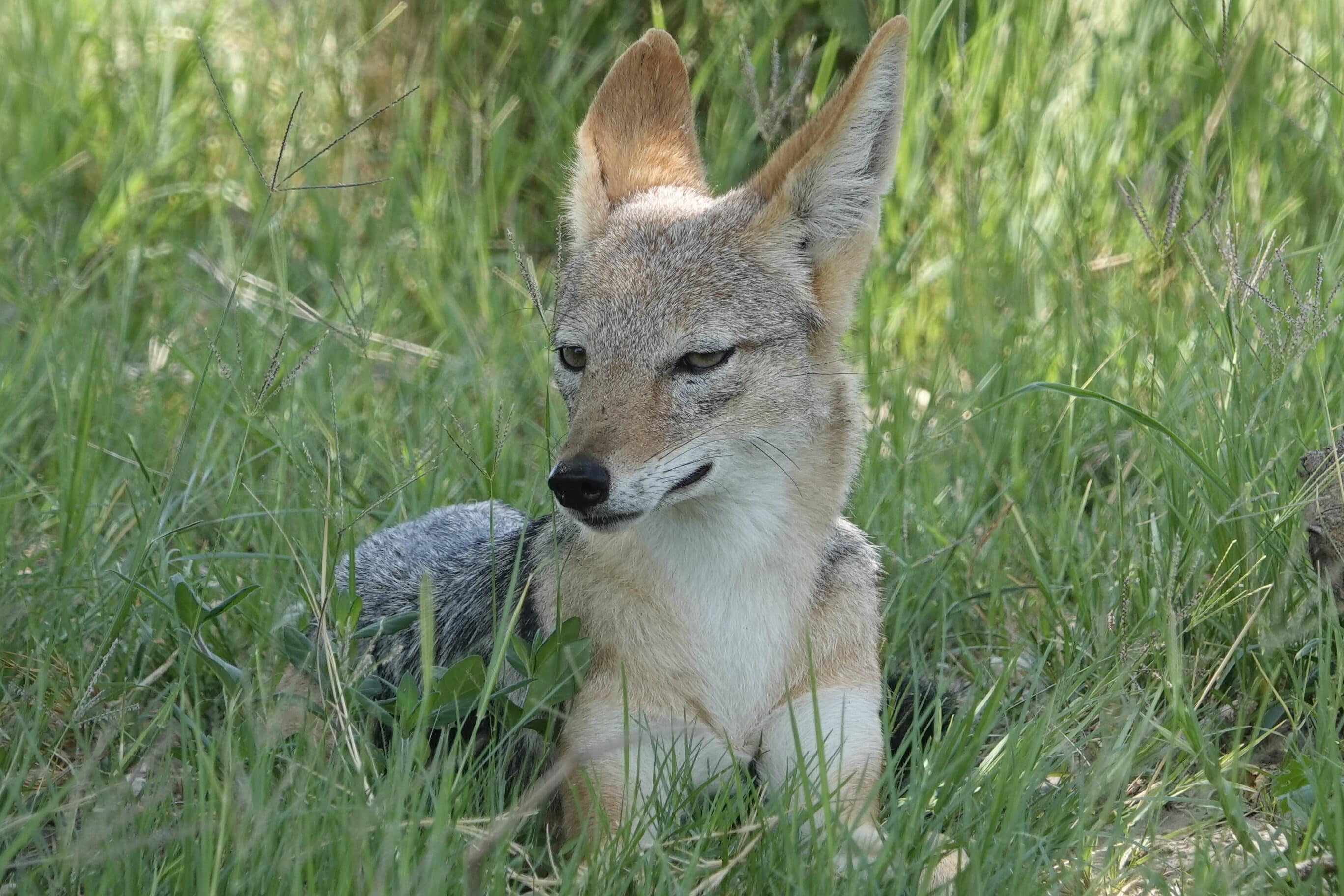
10. Kalahari desert
To be honest, after we visited the Kalahari desert and were back in an area with internet coverage, we first looked up what exactly the meaning of “desert” is. The desert stereotype that we know from the time we traveled through Mauritania in the Sahara does not apply to the Kalahari. In fact, the only similarity between the various types of deserts is that no more than 200 mm of rain falls per year over a large area. So it says nothing about temperature or soil conditions. For those who want to know more, take a look at Wikipedia.
The part of the Kalahari desert we visited is centrally located in Botswana, while the entire area is actually (partly) divided over 5 countries.
The central part consists largely of sand and low, dense vegetation. You could say very dense vegetation. It was downright challenging to drive through here. The paths, which often consist of deep sand, meant that we had to lower our tire pressure. And with the very narrow paths with sharp, hard vegetation, scratching along the camper sometimes hurt us to the bone. Then 220 kilometers is a long way at an average speed of about 20 km/h with little view.
Fortunately, we are occasionally distracted by the lower “pans” in the area. Here the wildlife comes to life. Huge herds of impala, gemsbok and wildebeest feed in these places, wary of the danger that lurks around the edges.
No shortage of birds.
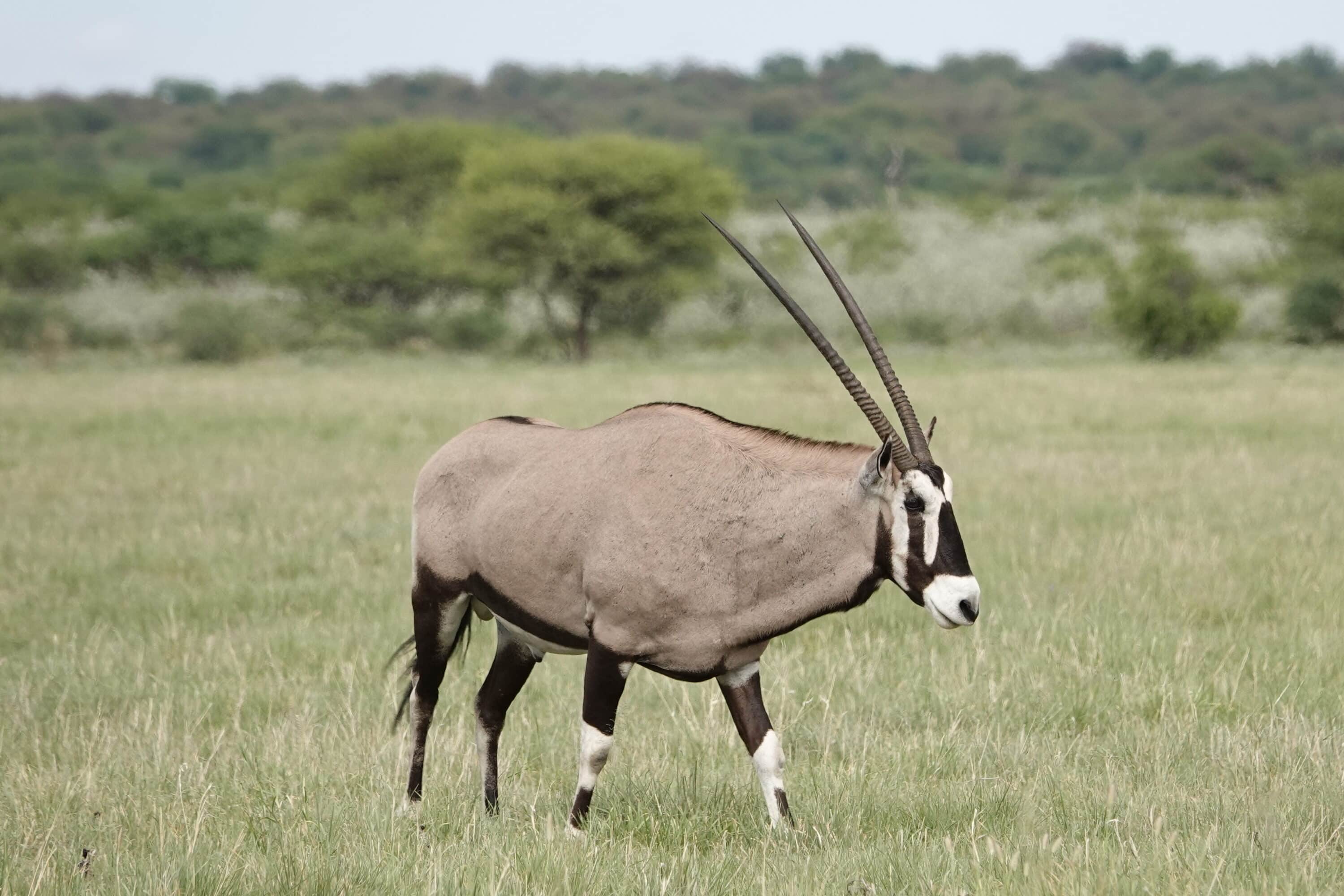
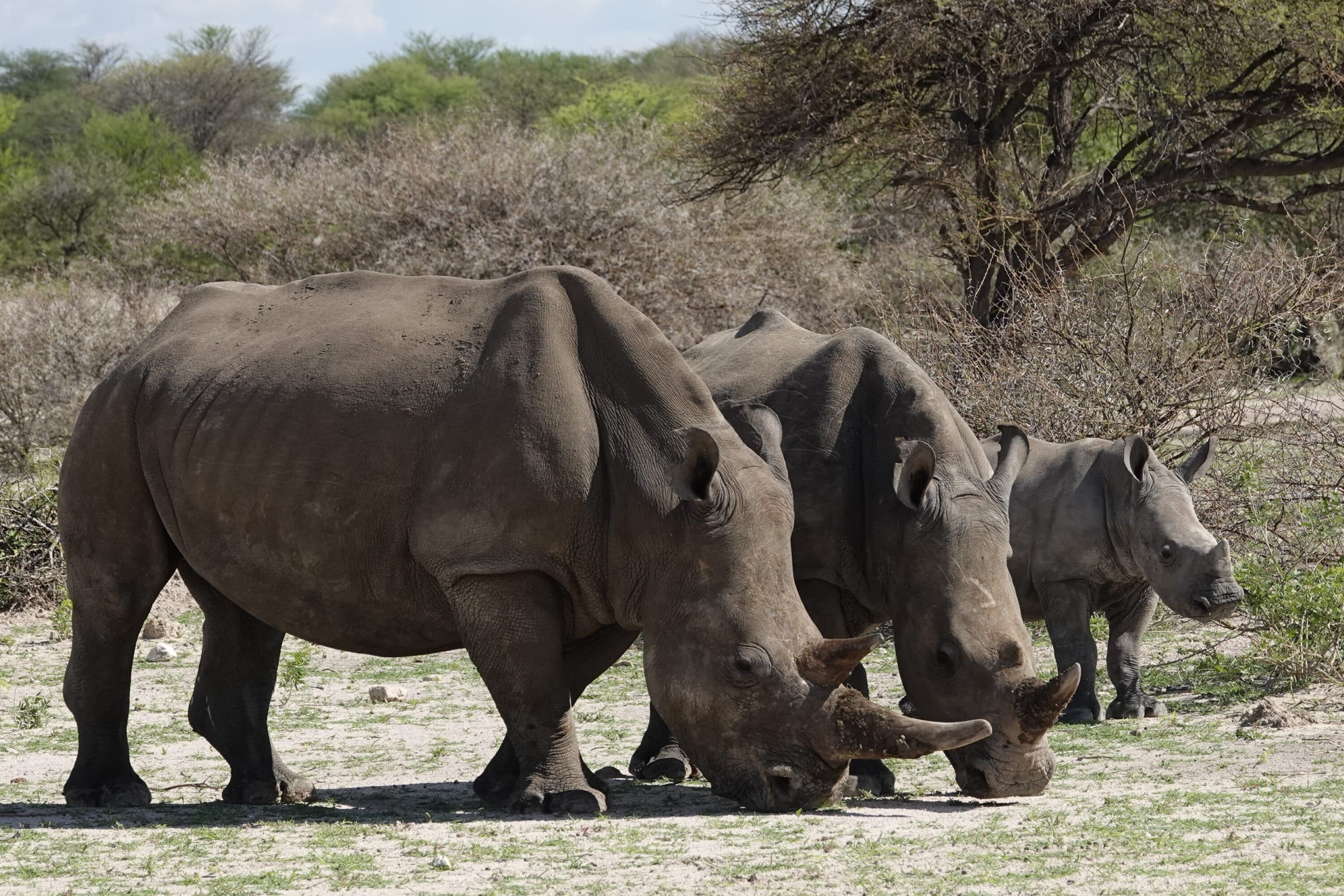
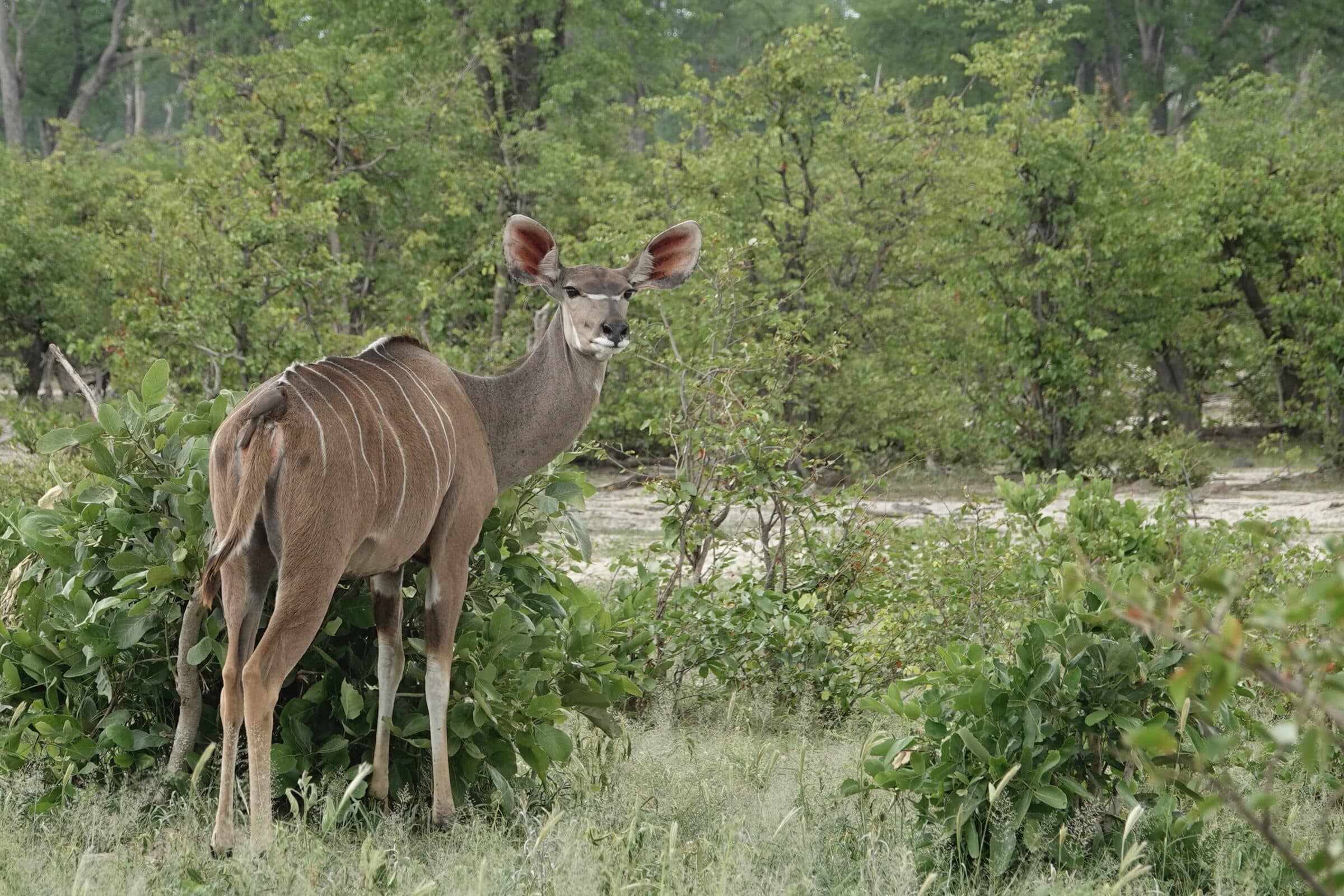
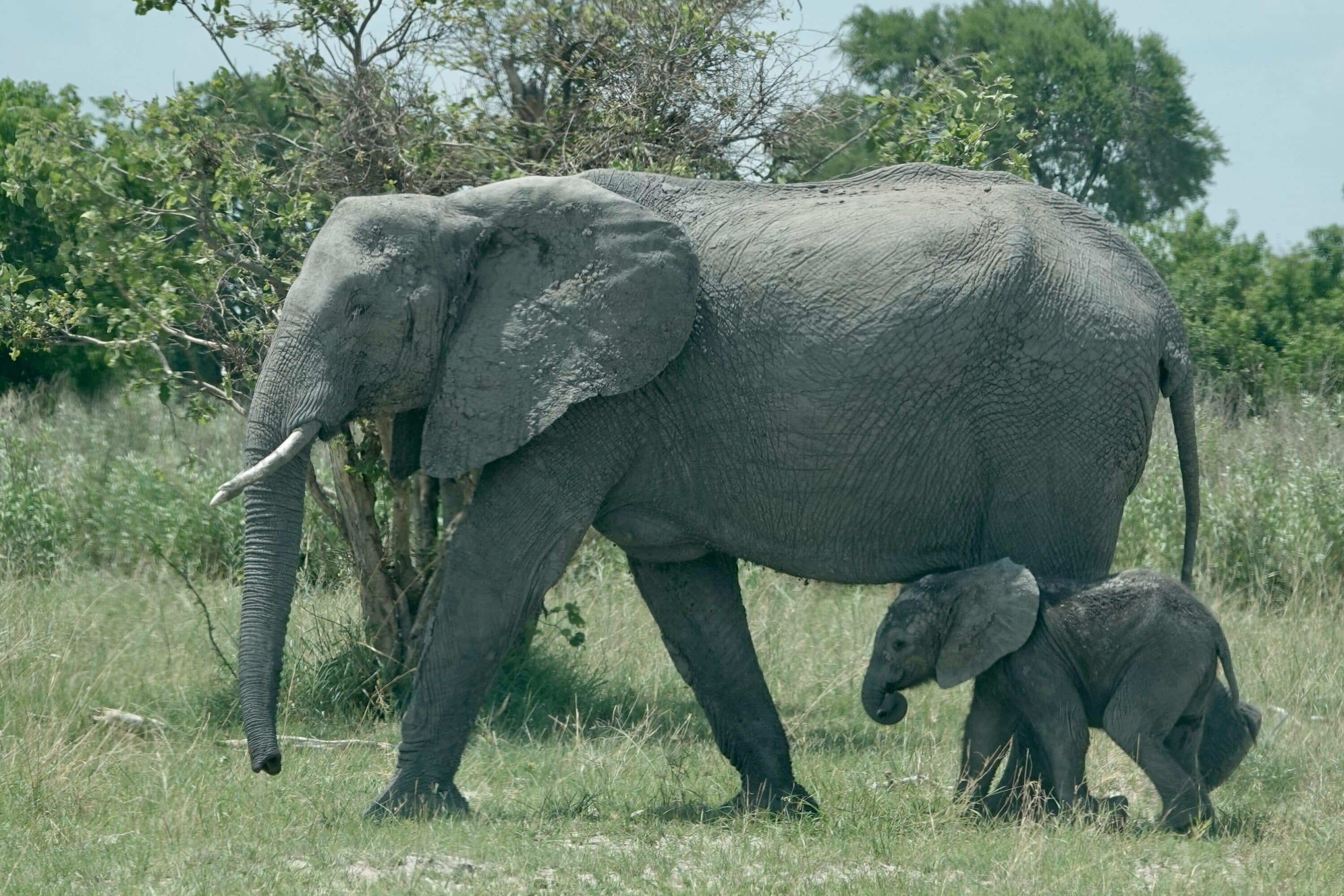
You must register at the entrance to the park and you can book a campsite for the number of nights you want to stay. There are two types of campsites. Some are managed by the government and cost a few euros per night. Another part is exploited by a commercial organization that charges at least ten times as much. Both types of camping pitches actually offer nothing more than a night in the middle of the park under a fantastic starry sky without any light pollution. Alone, because the next camping site is kilometers away.
Facilities at the sites are worthless, including bucket showers without a bucket, and pit toilets that are so dirty that you just have to find a nice spot in nature.
Anyway, you have to be adventurous to visit the Kalahari National Park.
In return you will receive a unique, secluded stay in the midst of endless unspoilt nature.
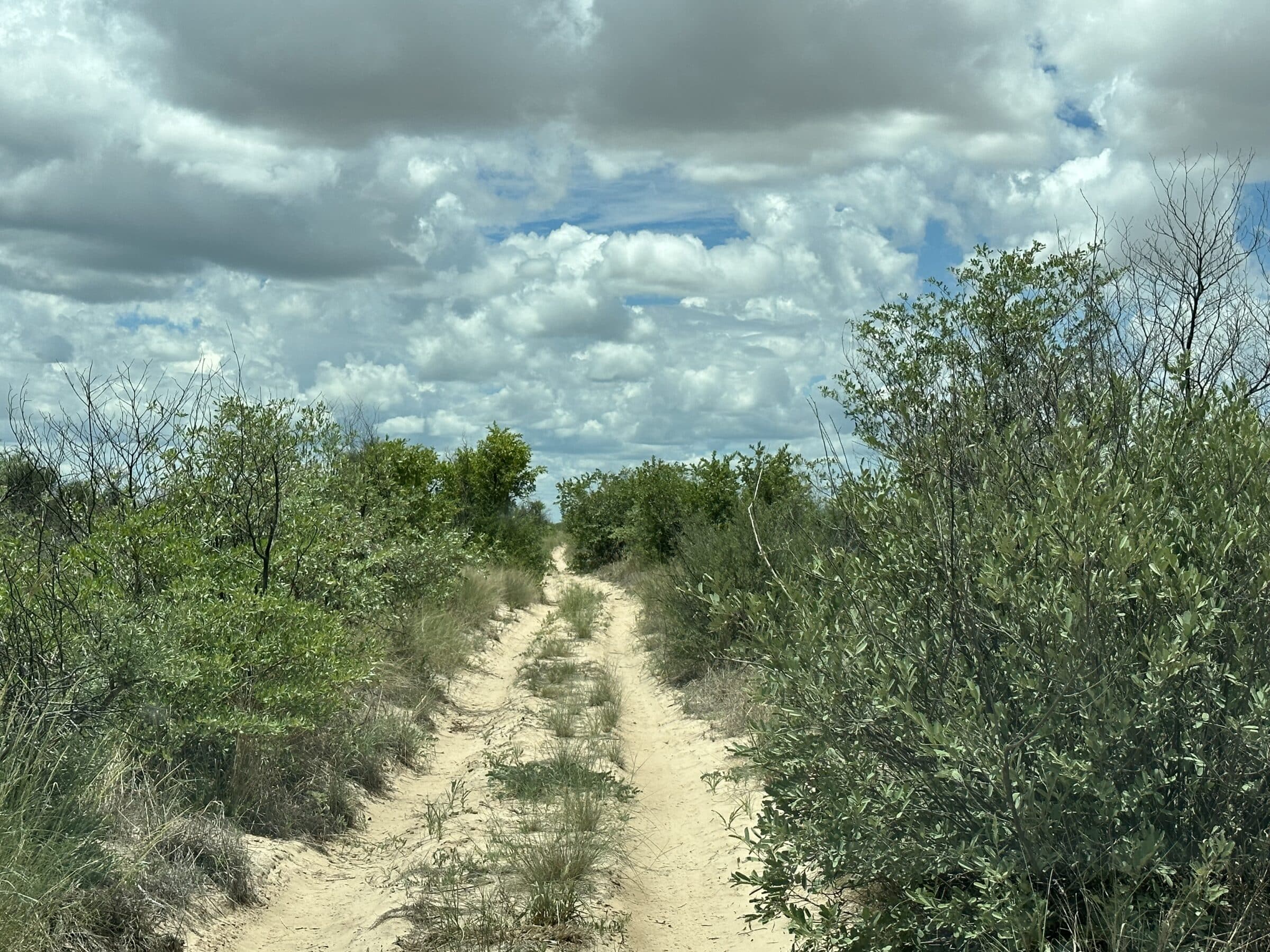
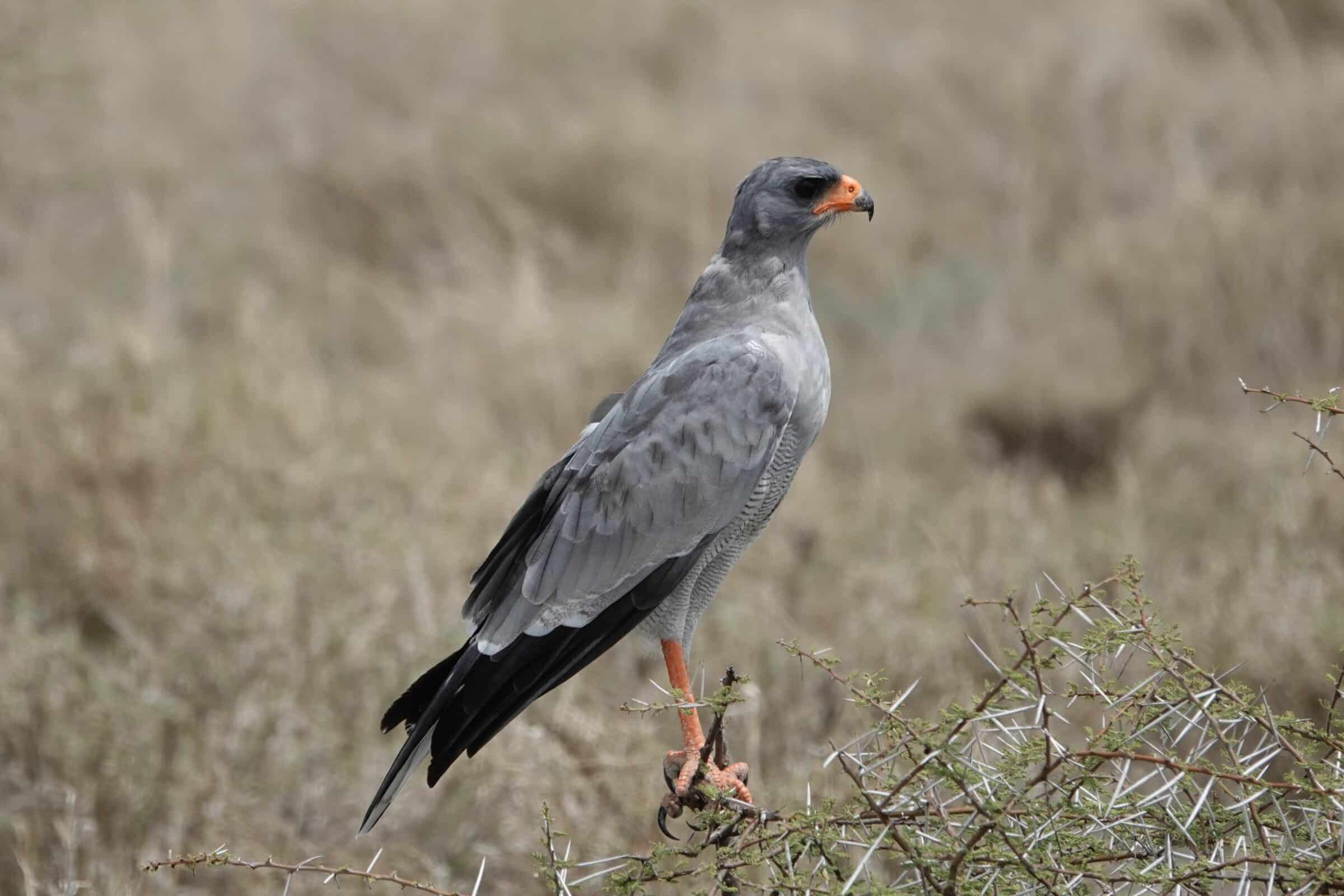
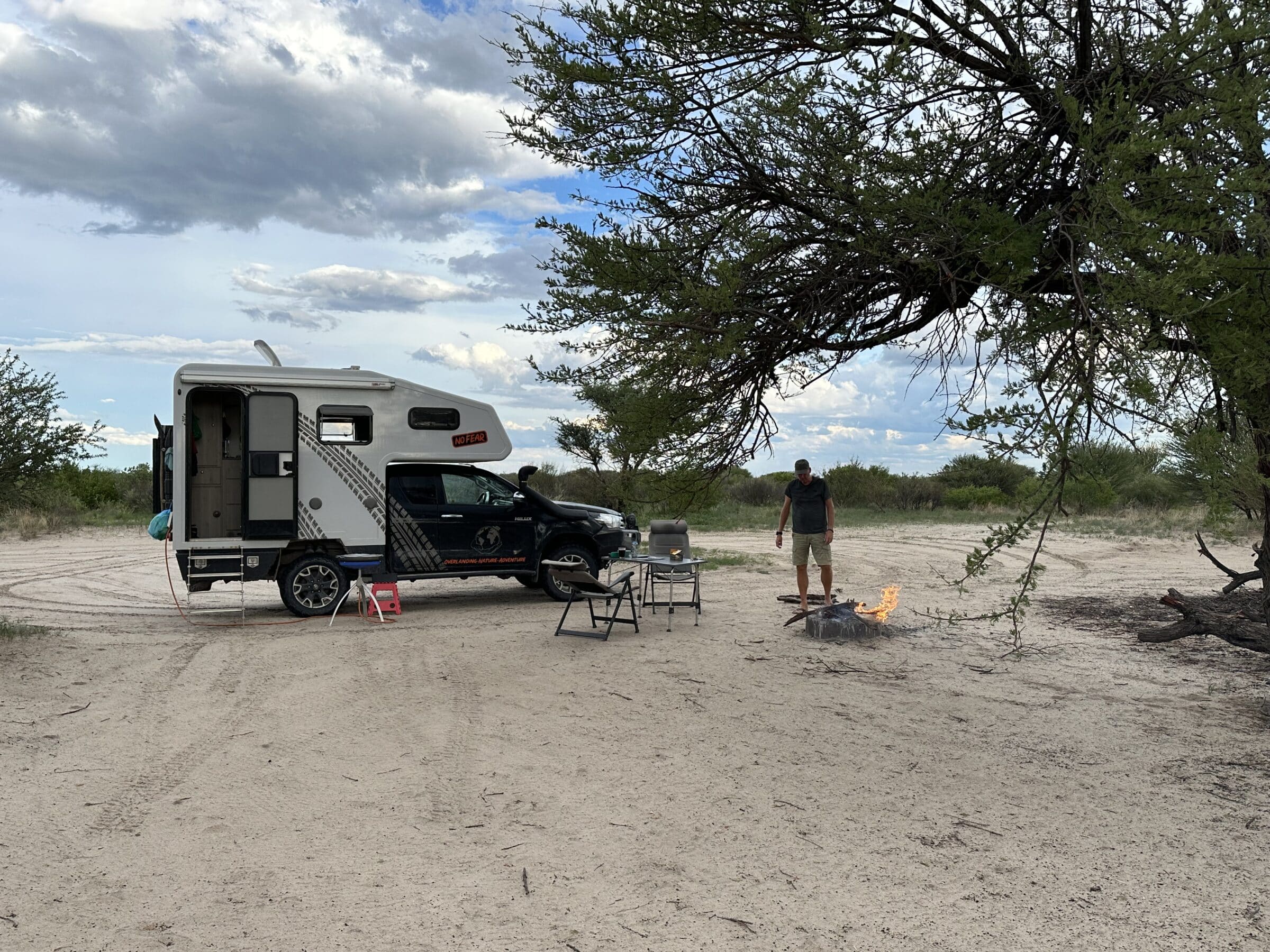
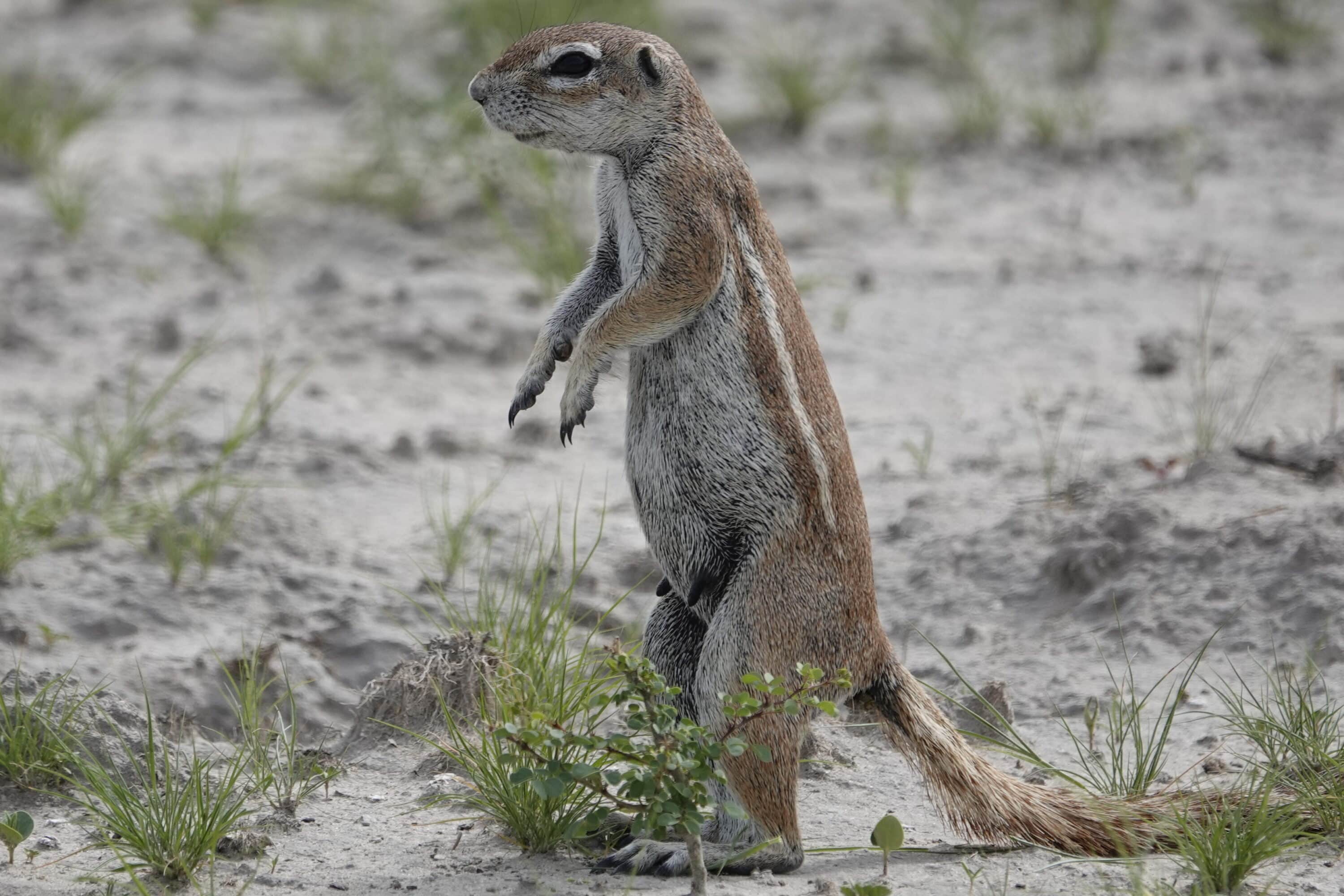
Before we leave Botswana we treat ourselves to a dinner at the nice campsite/lodge where we spend our last night in the country before we go to Namibia to leave.
On the menu, elk kebab, kudu pot, zebra burger and gemsbok steak. We enjoy it.
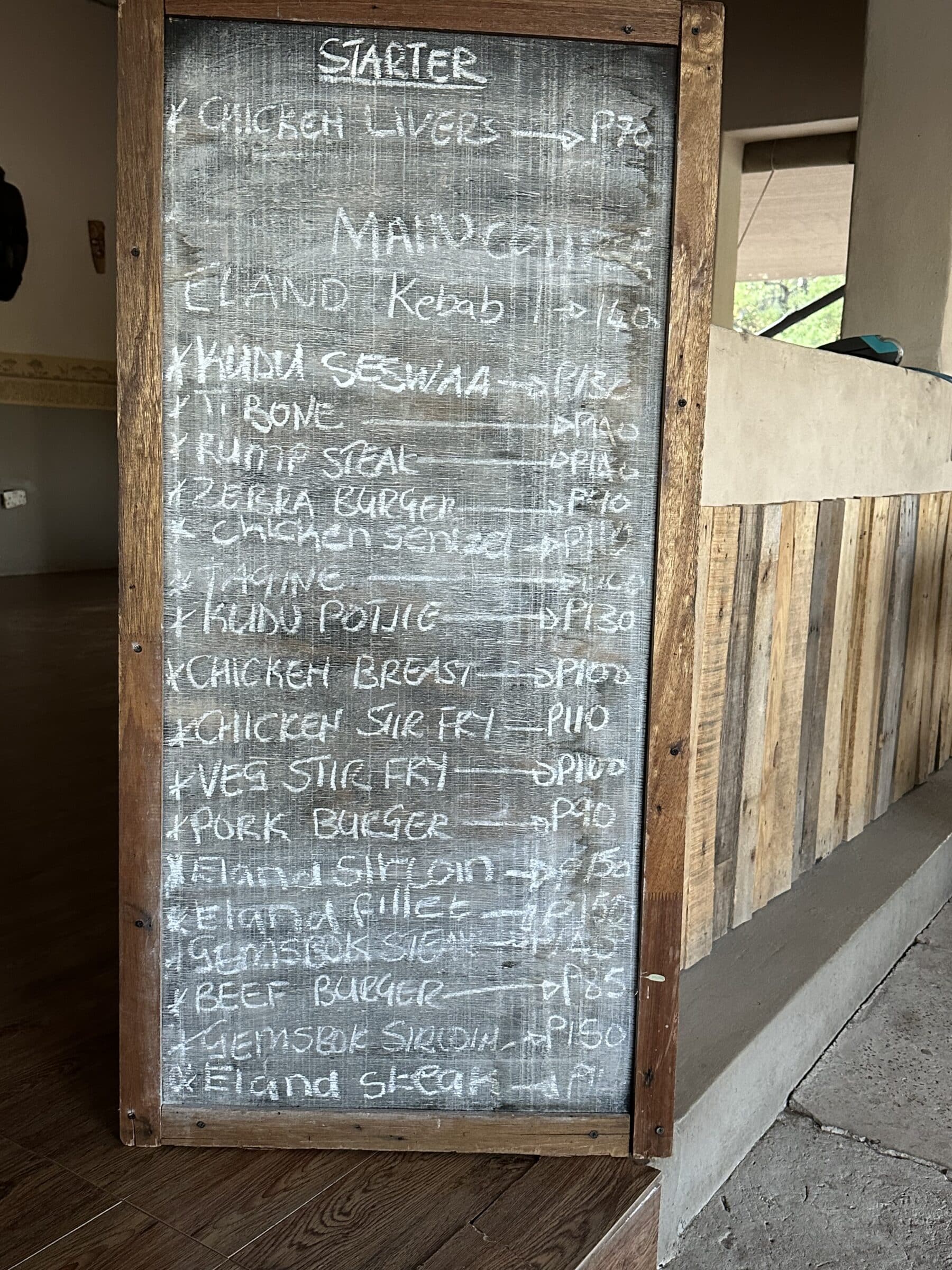
Conclusion Botswana
Botswana is known, among other things, as the land of elephants. But you are doing the country a disservice to only mention the elephants. Wildlife in general is beautiful. We still have flashbacks from West Africa and you can certainly say that it is an easy country to travel to. Tourism is common in the country, part of the population lives from it. This does mean that it becomes more difficult to come into genuine contact with locals because they are more likely to see you as a source of income. Still, in the village of Rakops we got a nice insight into the life of the Botswana. We have not actually seen dire poverty. Many middle class people who apparently are having a good time.
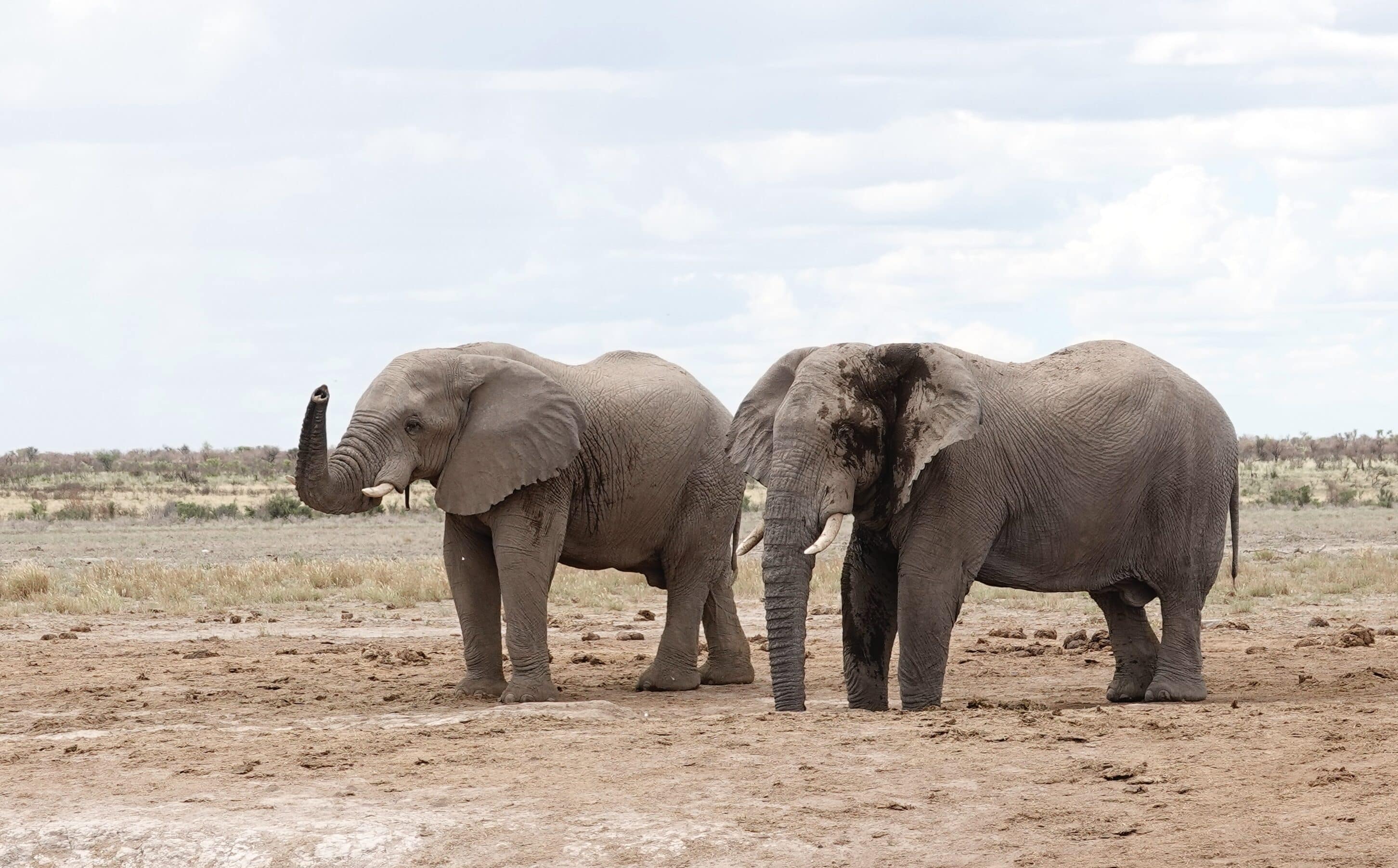
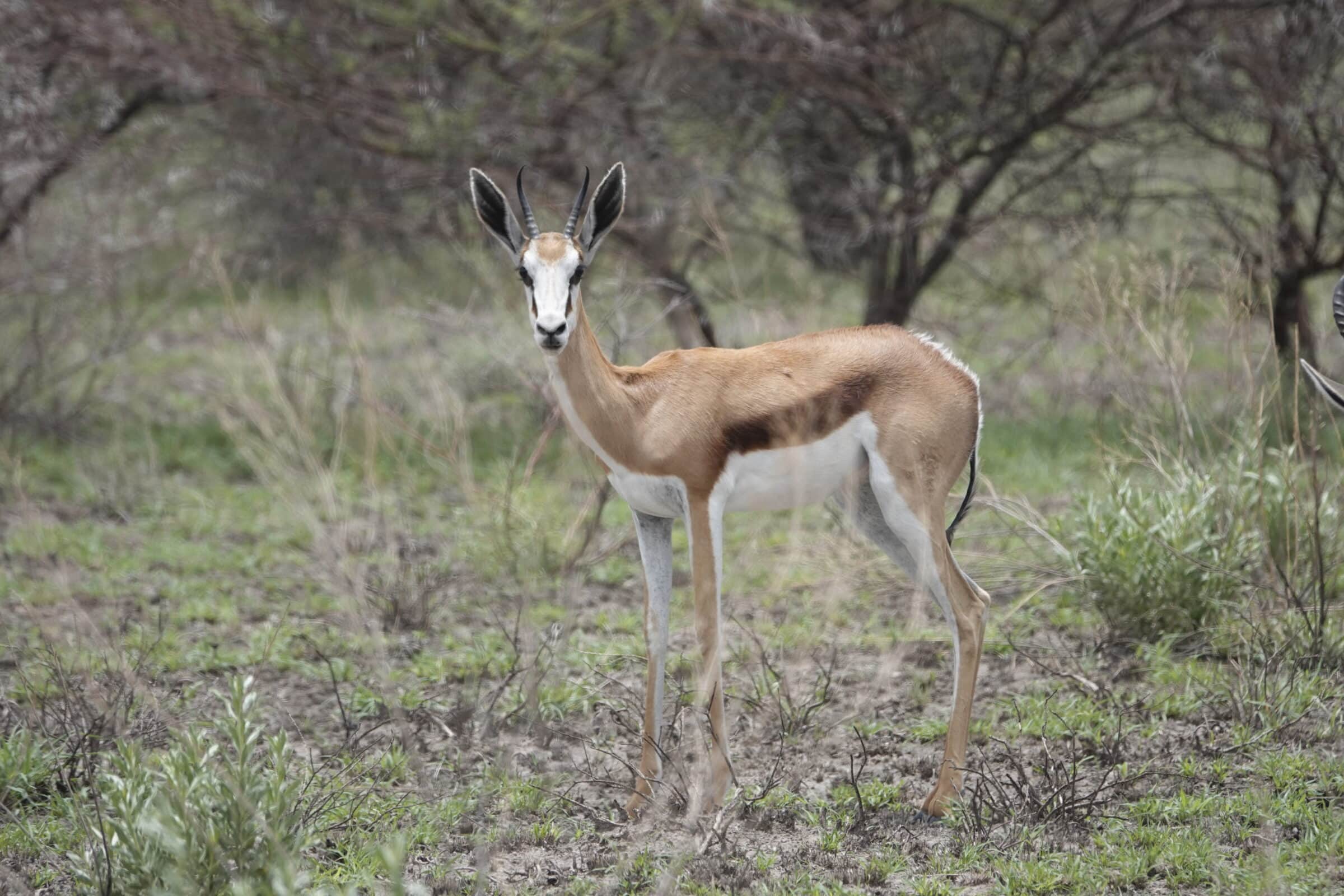
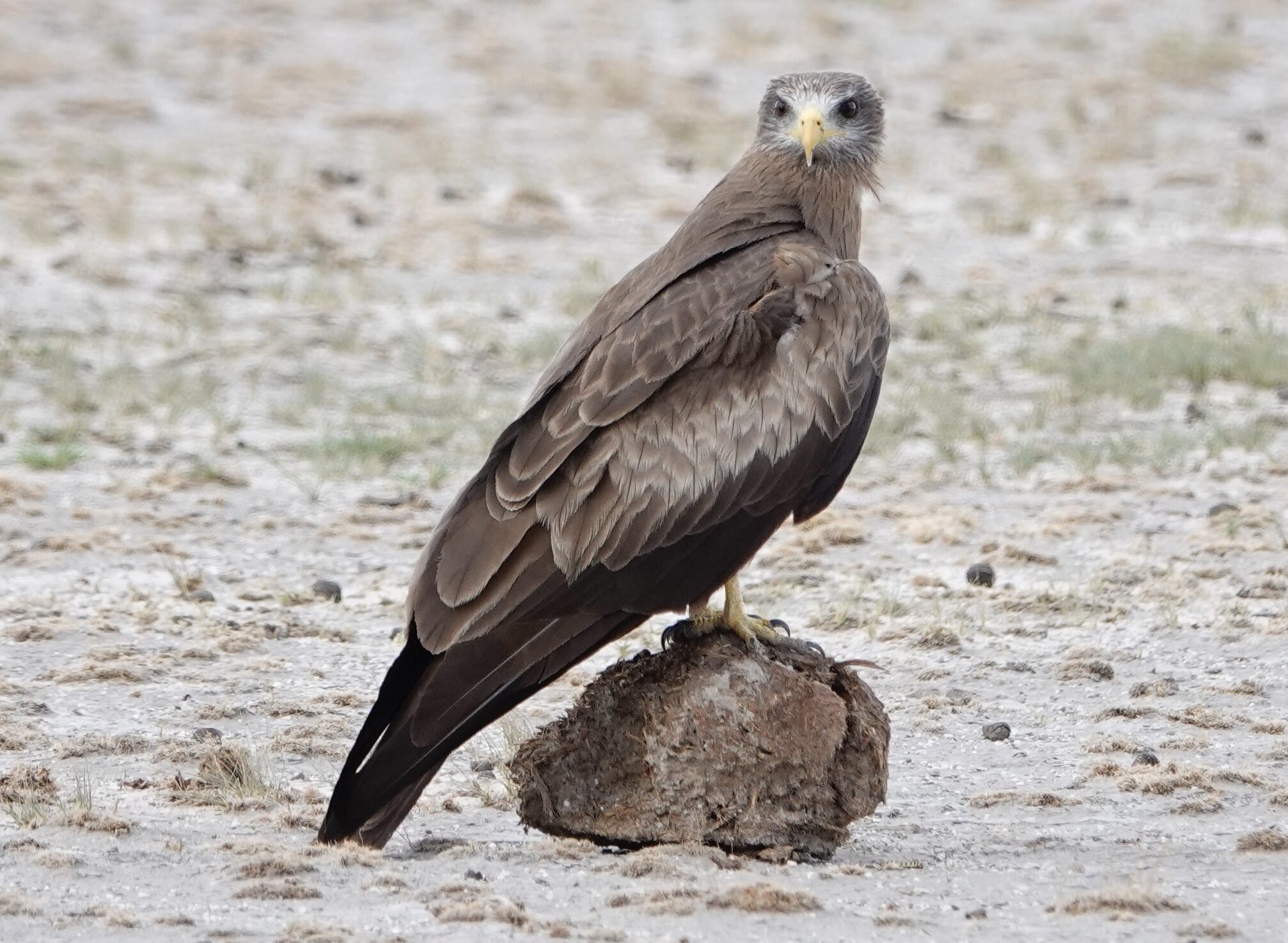
We saw several nature reserves, whether declared or not National Park.
Some (Chobe) very touristy, others very adventurous (Kalahari), but we enjoyed it immensely.
Ordered before overlanders Botswana is a country not to be missed and a beautiful destination for other tourists, whether or not in combination with surrounding countries.
Be surprised by the contrast between the grandeur of the Victoria Falls and the drought of the Kalahari, where desert elephants and skewers each survive in their own way.
- Nowhere in the world are there so many elephants
- Former English colony (so people speak English)
- An incredible amount of wildlife
- Unique experience


